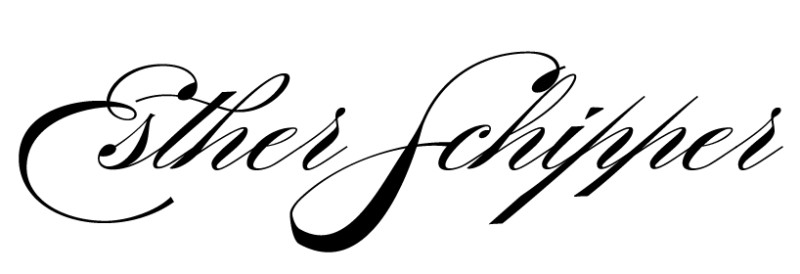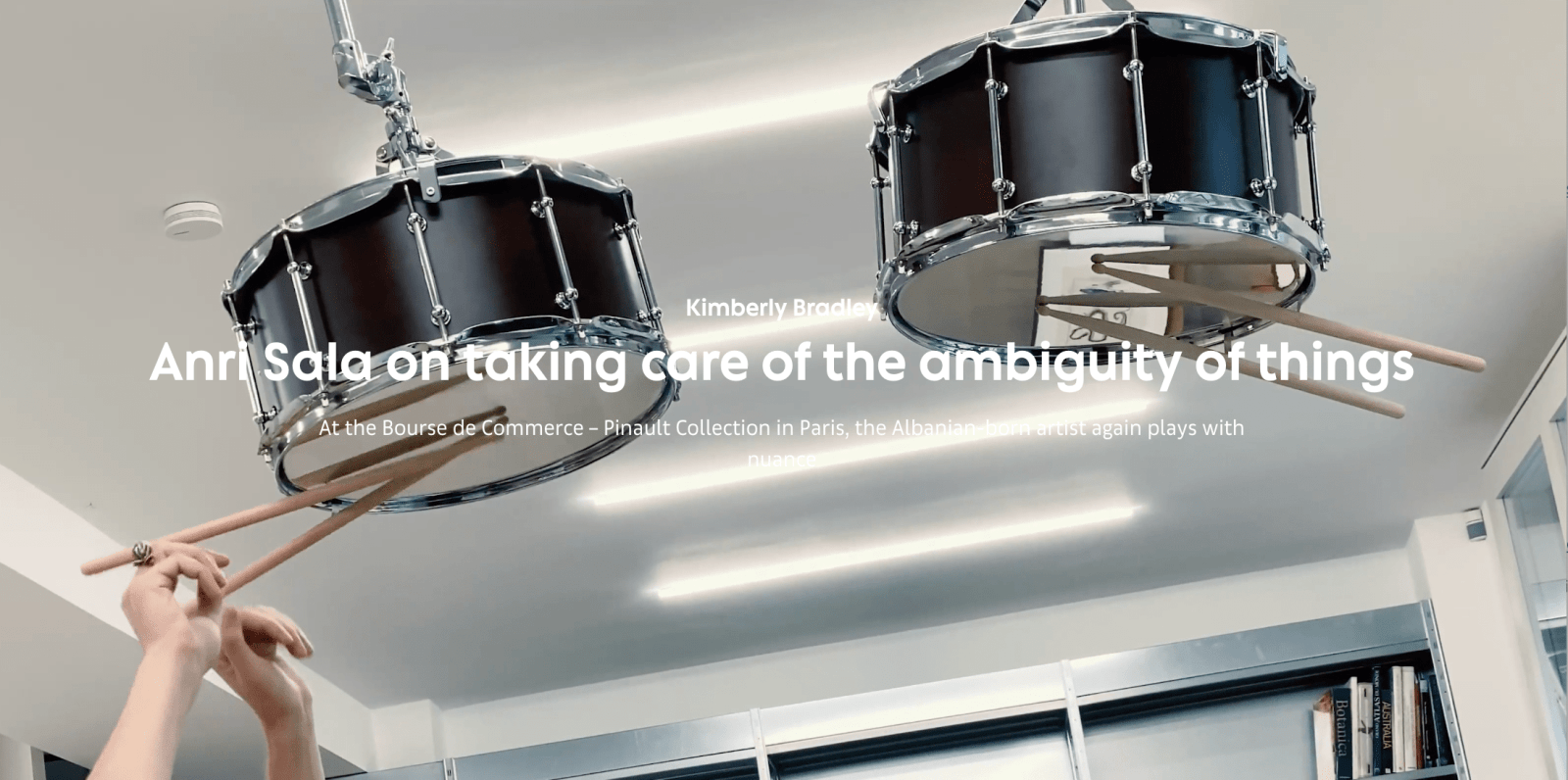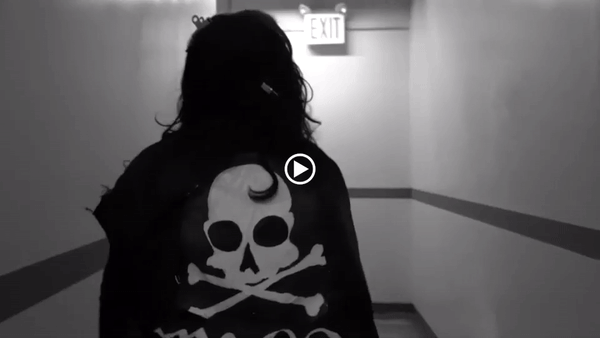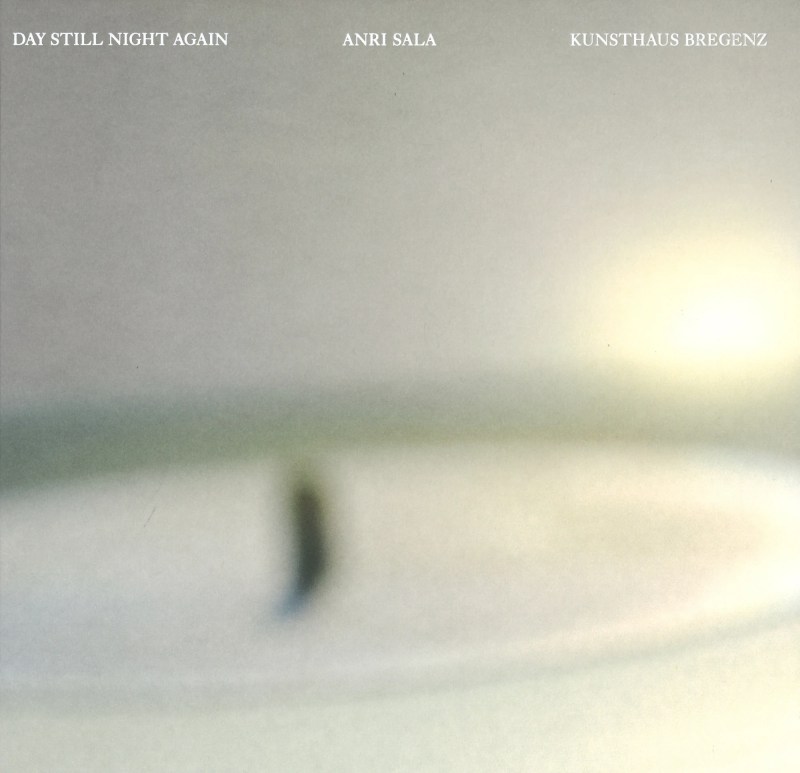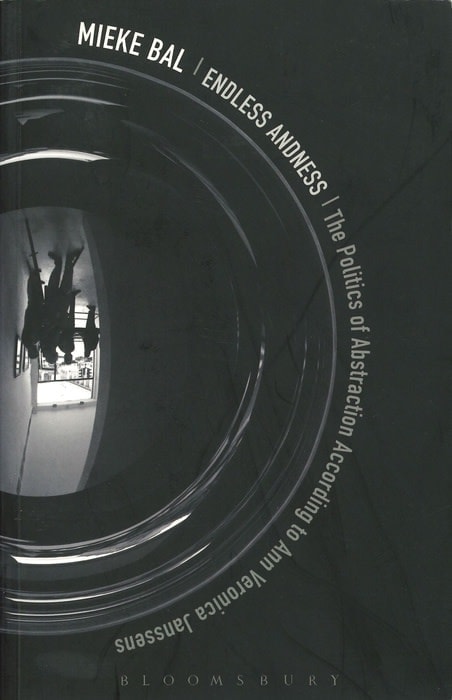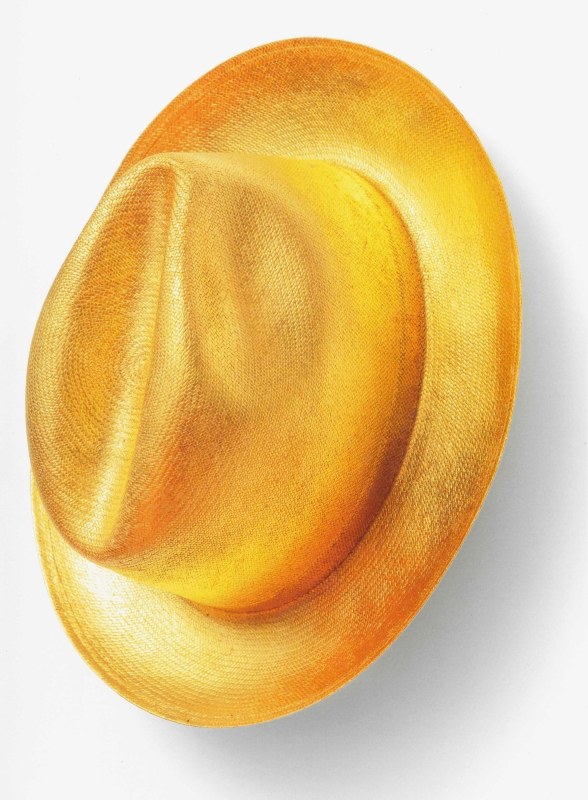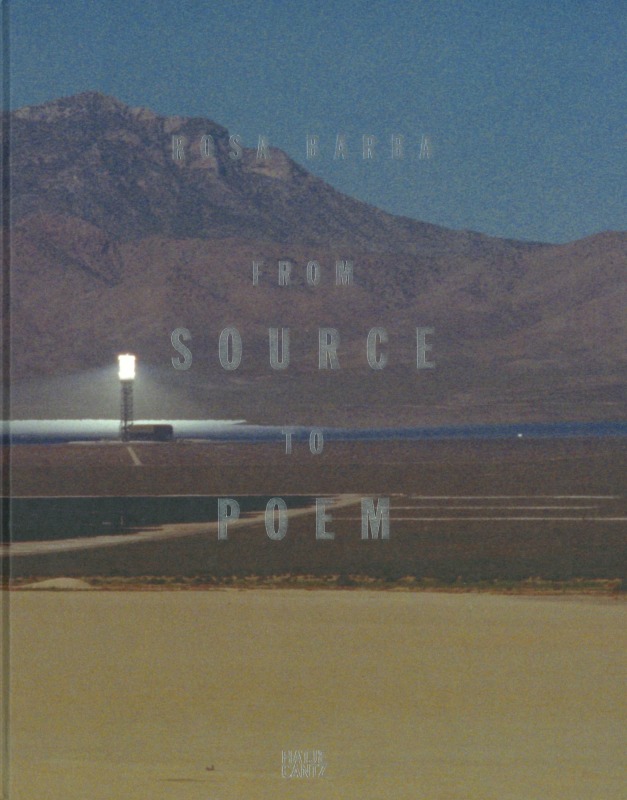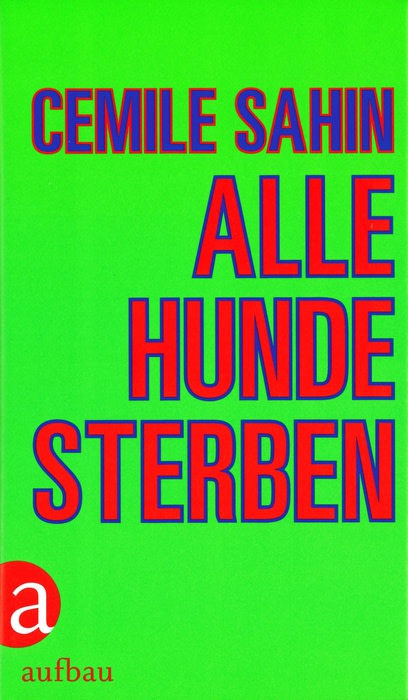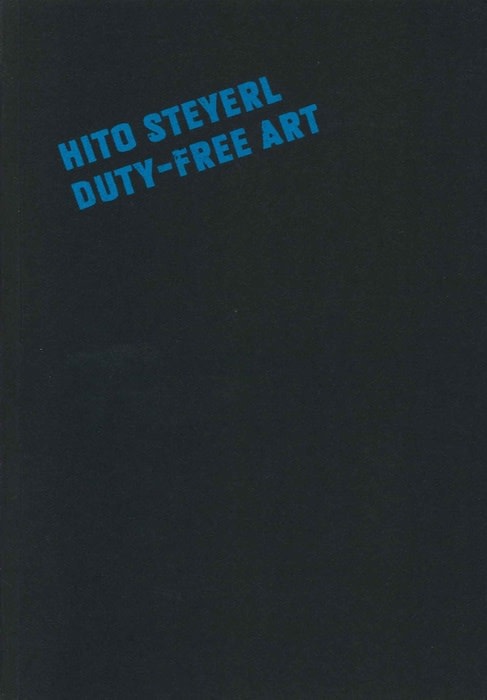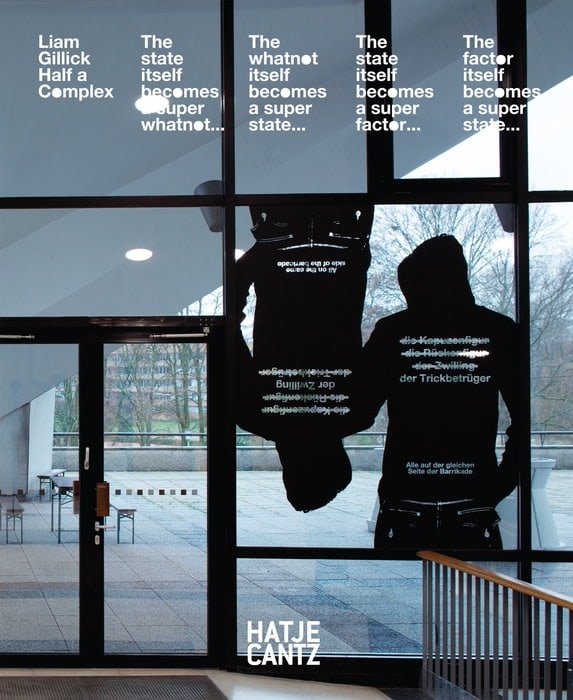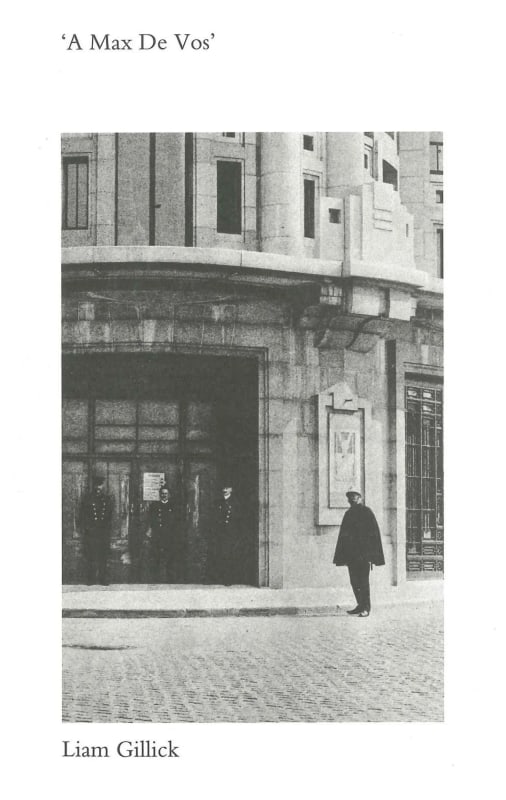Welcome to the Letter from Berlin!
This Letter from Berlin should rightfully be titled "Letter from Paris"!
We begin with projects in Paris: Etienne Chambaud's exhibitions in Paris and in Lille, as well as recently opened projects by Ugo Rondinone at the Petit Palais and Anri Sala at the Bourse de Commerce. Ann Veronica Janssens' site-specific work remains at the Panthéon through the end of the month. We present the limited edition artist book by Nathan Carter and Dan Estabrook, MARS The Goddess of Sex and Death, published by the Paris-based Three Star Press.
In Tours Rosa Barba's solo exhibition is on view. We also present Julia Scher's major solo exhibition of important historical and recent works at the Kunsthalle Zürich with excerpts from the artist's interview with Daniel Baumann about the works. In Graz, Hito Steyerl's Animal Spirits is on view. Simon Fujiwara's Who the Baer has traveled to Japan, where Prada is presenting a new exhibition at their Tokyo space. Finally, we visit Liam Gillick's ongoing project on Fogo Island. A selection of books concludes this newsletter.
We hope you enjoy our Letter from Berlin! |
|
|
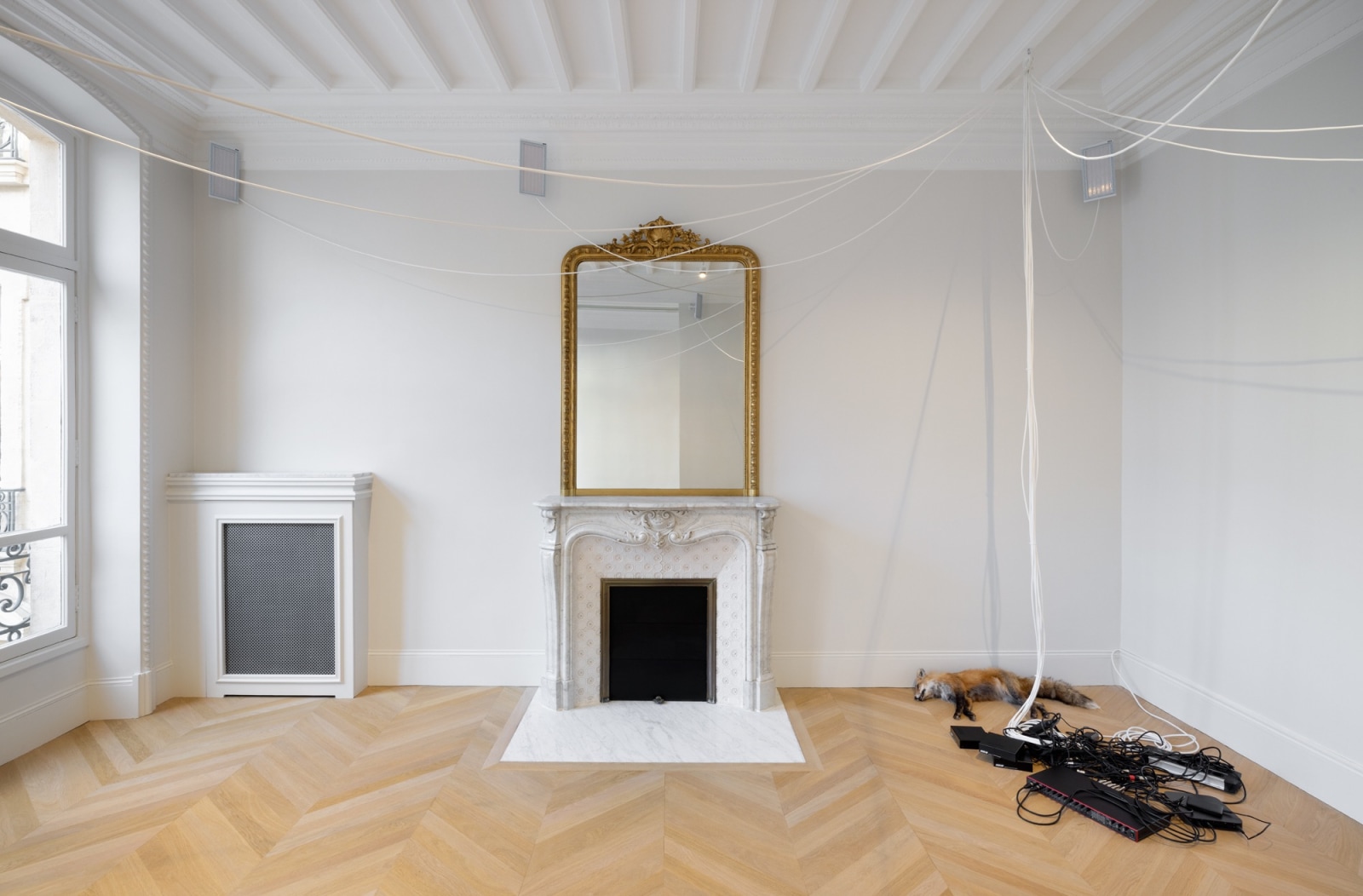
| Floor and ceiling: Syrinx, 2021/2022, computer simulation, sound diffusion system, dimensions variable
Floor (corner): Dead Dead Fox, 2014, taxidermied fox, 12 x 105 x 50 cm
Exhibition view: Etienne Chambaud, Expansion, Esther Schipper, Paris, 2022. Photo © Andrea Rossetti | |
|
Etienne Chambaud ExpansionEsther Schipper 16 place Vendôme 75001 Paris Through December 2, 2022 www.estherschipper.comEsther Schipper is pleased to announce the inaugural exhibition in our Paris gallery, Etienne Chambaud’s Expansion. Especially conceived for the space, Expansion is the artist’s second solo exhibition with the gallery. It consists of a sound installation and new sculptural works. Press release EN | FR
|
|
|

| Wall (left): Stase, 2022, brass, steel, stereolithographic prints, paint, 32 x 27 x 16 cm
Wall (right): Stase, 2022, brass, steel, stereolithographic prints, paint, 31 x 28 x 17 cm
Floor: Necknot, 2022, bronze, 92 x 56 x 33 cm
Exhibition view: Etienne Chambaud, Expansion, Esther Schipper, Paris, 2022. Photo © Andrea Rossetti
| |
|
'…in my work, there is a difference between the time of the development of the works, which is a moment of great accumulation of thoughts, knowledge, research, resources, attempts, incidents... and then that of the exhibition, which is not at all a moment of communication of the work process.'
— Etienne Chambaud speaking with Marie Maertens for ZeroDeux.
|
|
|
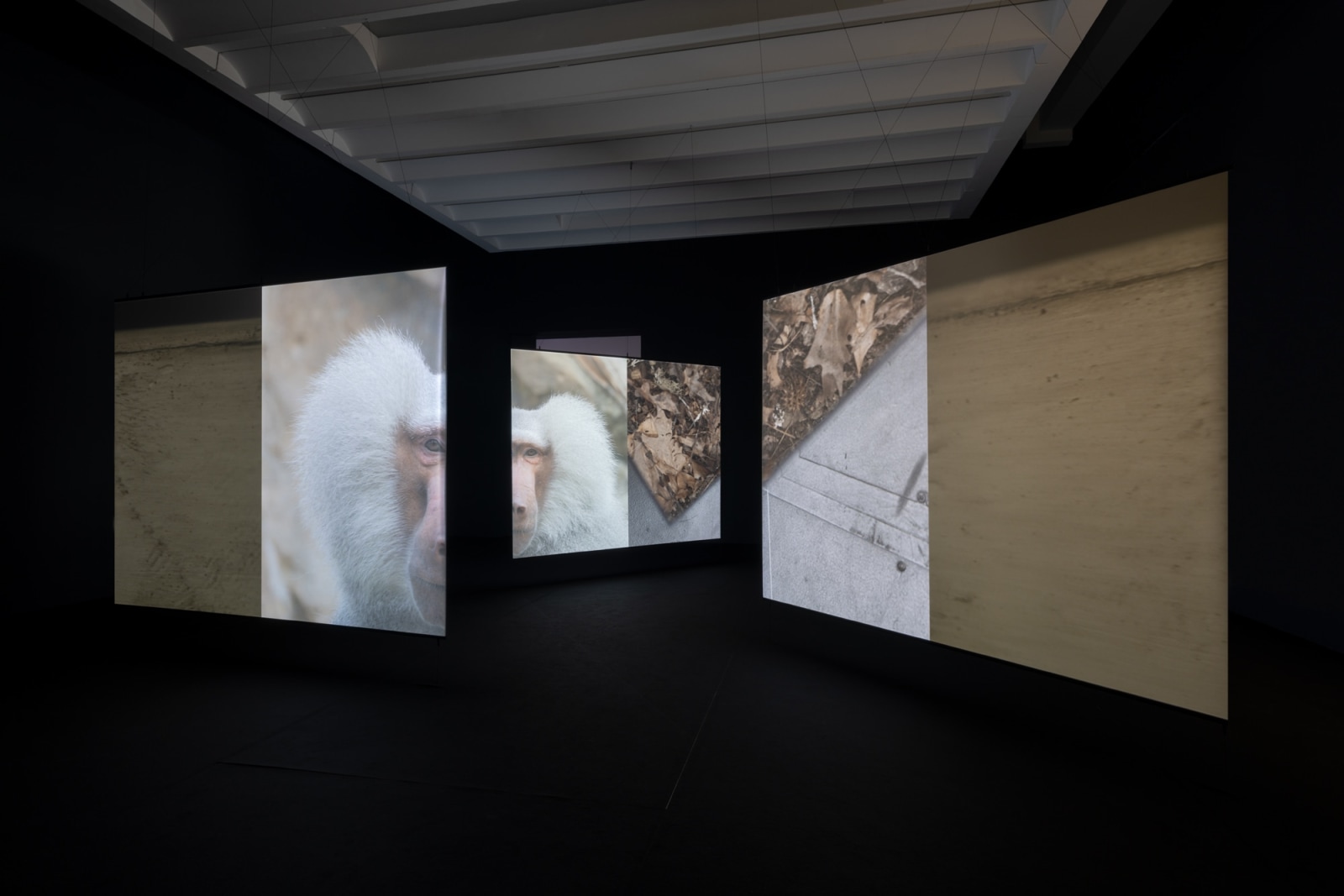
| Étienne Chambaud, La Nuit sauve [The Untamed Night], 2022, video installation; variable dimensions, infinite length.
Exhibition view: Etienne Chambaud, Lâme, LaM, Lille Métropole Musée d'art moderne, d'art contemporain et d'art brut, 2022. Photo © Andrea Rossetti | |
|
Etienne Chambaud LâmeLaM – Lille Métropole Musée d'art moderne, d'art contemporain et d'art brut 1 Allée du Musée 59650 Villeneuve-d'Ascq Through January 22, 2023 www.musee-lam-frLâme, Etienne Chambaud's first museum exhibition—has opened at LaM – Lille Métropole Musée d'art moderne, d'art contemporain et d'art brut in Villeneuve-d'Ascq. The title links the museum's name to "lame = blade," an object to cut with, and "âme = soul," the vital breath that symbolises life. In English, the title takes on yet another double meaning, as it evokes both an impaired body and a lack of substance. In the exhibition, the artist presents works from the last ten years, drawings from his childhood, and new creations, some of which have been conceived using borrowed items from scientific and cultural institutions in the city of Lille. Lâme is an exhibition of contradictions, metamorphoses, and hybridisations, processes characteristic of the artist's work. |
|
|
Below read an excerpt from Etienne Chambaud's interview with Marie Maertens recently published in Zero Deux.
Marie Maertens: Lâme at the LaM is your first solo exhibition in an institution. Did you develop it, as you often do, in relation to the context and the place?
Etienne Chambaud: This is an exhibition that I have been working on for a year, in response to the curators’ wish to carry out, at least in part, a project that was akin to a retrospective. A work of reflection was based on existing works, starting with the film La Nuit sauve, on which I have been working for a long time and of which I am showing here a first, still unfinished version. It gave a framework to the exhibition, which is enriched by both recent and very old productions, since one room shows drawings and collages made when I was three or four years old. I also reflected on the meaning of collections, literally, by exhibiting a year’s worth of dust from the LaM and by taking 19th century paintings from the Palais des Beaux-Arts in Lille and specimens from the same period from the Musée d’Histoire Naturelle out of their storage rooms. I then combined these empty landscapes with these stuffed animals in a device that resembles a cage, a wall or a scaffold. It is both an exhibition within an exhibition and a transitory work whose components will return in a few months to their respective storerooms. |
|
|

| Exhibition views: Etienne Chambaud, Lâme, LaM, Lille Métropole Musée d'art moderne, d'art contemporain et d'art brut, 2022. Photos © Andrea Rossetti | |
|
MM: There is also an element of randomness in La Nuit sauve, although it is based on control… EC: This film, about capture, focuses on the animal body and the devices that have framed its visibility during modernity. For years, and for months, I have been filming animals in cages in different zoos. I have also made long tracking shots in the reserve collections of the Muséum National d’Histoire Naturelle in Paris. Another sequence tirelessly follows a piece of string on the ground on a theatre stage, filmed by a robot whose lens/gaze seems to be trapped. Broadcast on three double-sided screens, the video installation is like a minimalistic version of a labyrinth. We are in front of or behind the image, without an overall perspective. Then something happens in the exhibition space. An algorithm sometimes analyses the sounds of the film and transforms them into a musical version: it attempts to reproduce the original sounds using only the sounds that can be produced by the instruments of a symphony orchestra. A bit like the birdsong in the gallery, the film becomes a place where musical or noisy variations emerge. Constructed on the idea of constraint and enclosure, this film is also a place where something is created… MM: Is this very present observation on animals associated with biology and nature or does it enable you to allow a slightly wilder form of expression to emerge? EC: When I first became interested in the history of the museum, I was looking more at the history of the art museum, such as in my film Contre-histoire de la séparation (2010, with Vincent Normand), but very quickly the zoo interested me as a specific museum. On the one hand because it seems more accessible – it is a place for childhood – but it is also more complex – it displays sentient beings even if it only collects their genetic heritage. More broadly speaking, I have always been very interested in biology, particularly because the great question of art appears to me to be that of metamorphosis. How does a structure creating forms take shape and transform itself? In a context governed by algorithms that can produce infinite variation, we must not be fooled: variation is not an emancipation, it is a freedom that is absolutely constrained. For a real metamorphosis, it is necessary to change the rules that govern the processes of transformation: to transform the transformation itself. Read the entire interview HERETo coincide with the exhibition, a richly illustrated catalogue on Chambaud's practice has been published by LaM and Éditions Dilecta. Ordering information can be found below.
|
|
|
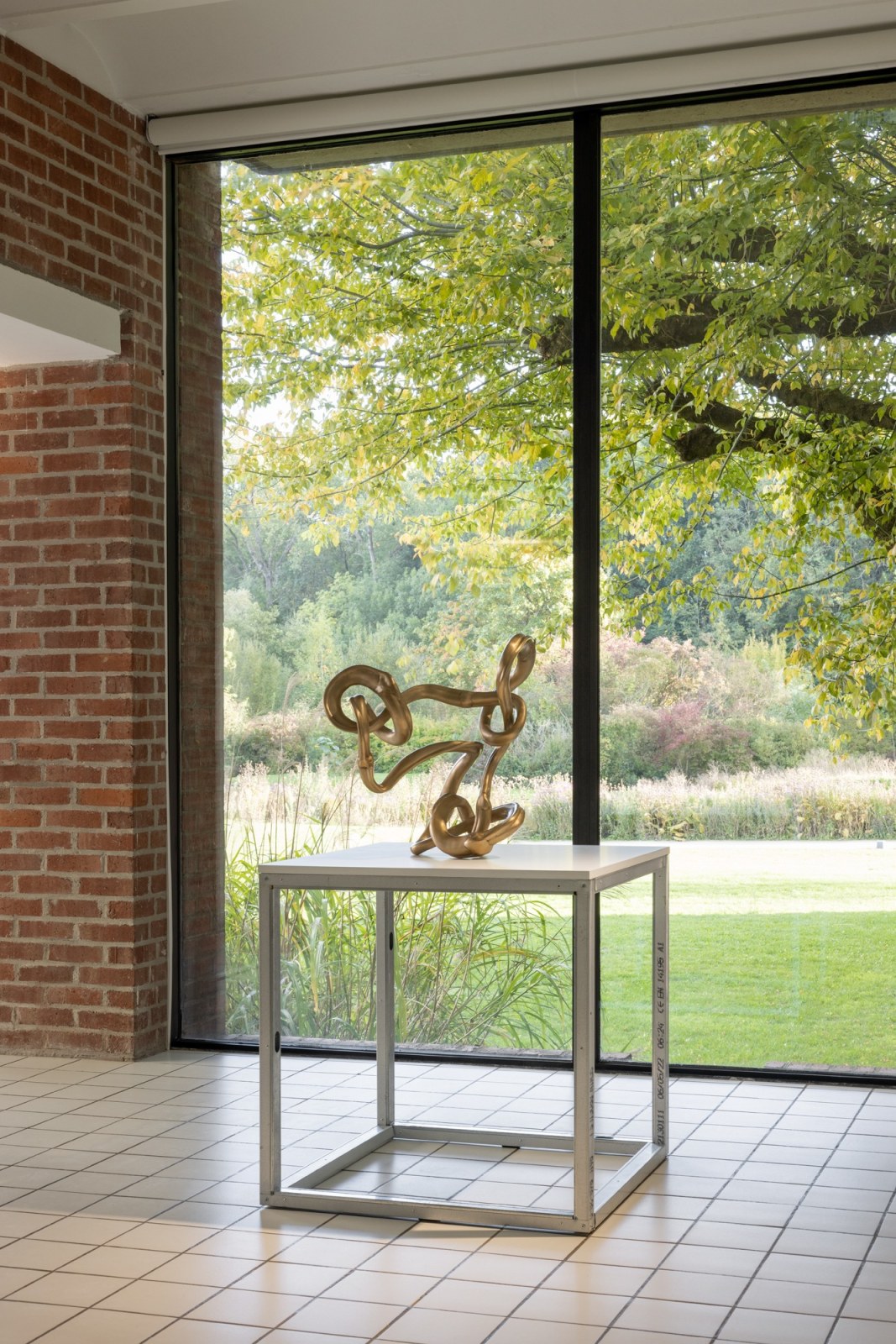
| Etienne Chambaud, Necknot, 2022, bronze, 62 x 56 x 31 cm
Exhibition view: Etienne Chambaud, Lâme, LaM, Lille Métropole Musée d'art moderne, d'art contemporain et d'art brut, 2022. Photo © Andrea Rossetti
| |
|

| Booth views: Esther Schipper, Paris+ par Art Basel, 2022. Photos © Andrea Rossetti
| |
|
Paris+ par Art Basel Booth B07Grand Palais Éphémère 2 place Joffre 75007 Paris Through October 23, 2022 www.parisplus.artbasel.comClick here to explore works in our boothFor the inaugural edition of Paris+ par Art Basel, Esther Schipper is pleased to present a curated selection of new and major works by artists of the gallery: Rosa Barba, Angela Bulloch, Etienne Chambaud, David Claerbout, Simon Fujiwara, Ryan Gander, Francesco Gennari, Dominique Gonzalez-Foerster, Ann Veronica Janssens, Philippe Parreno, Cemile Sahin and Anri Sala. If you wish to receive a dossier, or should you have any questions about our presentation at Paris+ par Art Basel, please contact Julia Séguier: seguier@estherschipper.com
|
|
|

| Exhibition view: Ugo Rondinone, the water is a poem unwritten by the air no. the earth is a poem unwritten by the fire, Petit Palais, Paris, 2022. Photo: archives kamel mennour. © Ugo Rondinone / Petit Palais.
| |
|
Ugo Rondinone the water is a poem
unwritten by the air
no. the earth is a poem
unwritten by the firePetit Palais, Paris Tbhrough January 8, 2023 www.petitpalais.paris.fr
Ugo Rondinone’s exhibition the water is a poem unwritten by the air no. the earth is a poem unwritten by the fire at the Petit Palais comprises two ensembles of works enhanced by a new video installation. Revolving around human bodies in contact with the elements and nature, these works are in keeping with the multiple families of works produced by the artist since the late 1980s. Earth, sky, air, water and fire, associated with beings at rest or in movement, are invoked in the fulness of their spiritual dimension. The first ensemble, humansky, welcomes visitors and immediately underlines the melding of being and the elements: seven moulded, suspended bodies embellished with a blue cloud-dotted sky “camouflage” confronting visitors with water and air. The second group, historically the source of this trilogy, consists of Nudes. Made from a blend of transparent wax and earth collected from seven continents, these sculptures also have a “camouflaged” look stemming from the mixing of their non-homogeneous components. They depict the bodies of male and female dancers seated and at rest. Created on a human scale, these nudes seem realistic at first, until the visitor, coming closer, discovers their clearly artificial aspect, particularly visible at the junction of their limbs with their bodies. These sculptures are thus “paradoxical” in their compliance with the Rondinone aesthetic: he plays on the “opposition” between what is expected of a dancer, and the pose he makes each one assume. Banishing any choreographed gesture and any reference to the stage space, these motionless, withdrawn bodies seem to have become one with nature, intensely concentrated and lost in a meditative state.
|
|
|
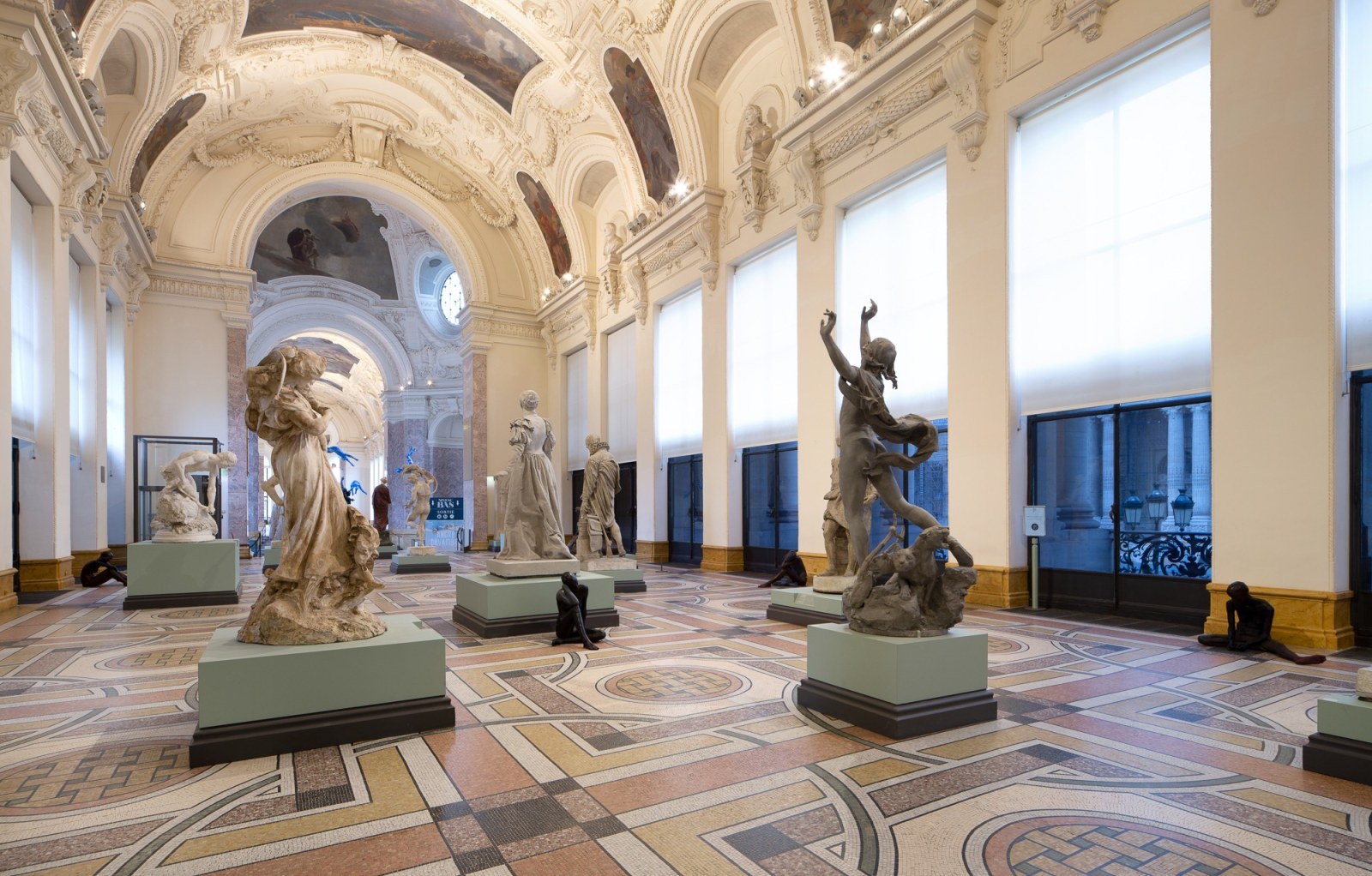
| Exhibition view: Ugo Rondinone, the water is a poem unwritten by the air no. the earth is a poem unwritten by the fire, Petit Palais, Paris, 2022. Photo: archives kamel mennour. © Ugo Rondinone / Petit Palais.
| |
|
From one ensemble to the next visitors witness a process of bodies in mutation: moving from the ethereal suspension of humansky to the quasi-lethargy of the Nudes, the bodies are “reborn” in the film burn to shine, whose presentation at the Petit Palais is a world premiere. The film is projected onto six screens inside a cylindrical space made of charred wood and forming a circle, a recurring geometric figure for the artist. The body is in movement here: 12 percussionists and 18 male and female dancers are gathered around a fire in the desert. Combining an ancestral trance from the Maghreb with the gestures of a contemporary dance conceived with the help of Franco-Moroccan choreographer Fouad Boussouf, they unite with nature from sunset until dawn, when the sun rises again.
The cylinder’s wooden slats exclude any view of the outside; they indicate a path to follow. Since the beginning of his career, Ugo Rondinone has considered it necessary to create an enclosed “isolated” environment facilitating dialogue with nature. Hence the importance for him of presentation gambits attenuating the presence of the surrounding urban landscape. The filters placed on the windows—when the sun goes down and the moon comes up—are part of this quest and remind us above all that each of Rondinone’s exhibitions is inherently a work of art in its own right.
According to the artist, the link between the first two groups and burn to shine is a desire for transformation: “The initial inspiration came from a poem by John Giorno titled ‘You must burn to shine’.”: a Buddhist proverb about the coexistence of life and death, reminiscent of the much older Greek myth of the phoenix, the immortal bird that regenerates cyclically or is reborn in a different way. Associated with the sun, the phoenix receives new life by resurrecting from the ashes of its predecessor”.
Lastly, the artist has taken into account works belonging to the Petit Palais, with which his own are confronted here. He has turned to anthropomorphic sculptures from the museum’s collection to better “contextualise” the nudes and surrounded the cylinder of burn to shine with four paintings by Eugène Carrière. |
|
|

| Exhibition view: Ugo Rondinone, the water is a poem unwritten by the air no. the earth is a poem unwritten by the fire, Petit Palais, Paris, 2022. Photo: archives kamel mennour. © Ugo Rondinone / Petit Palais. | |
|
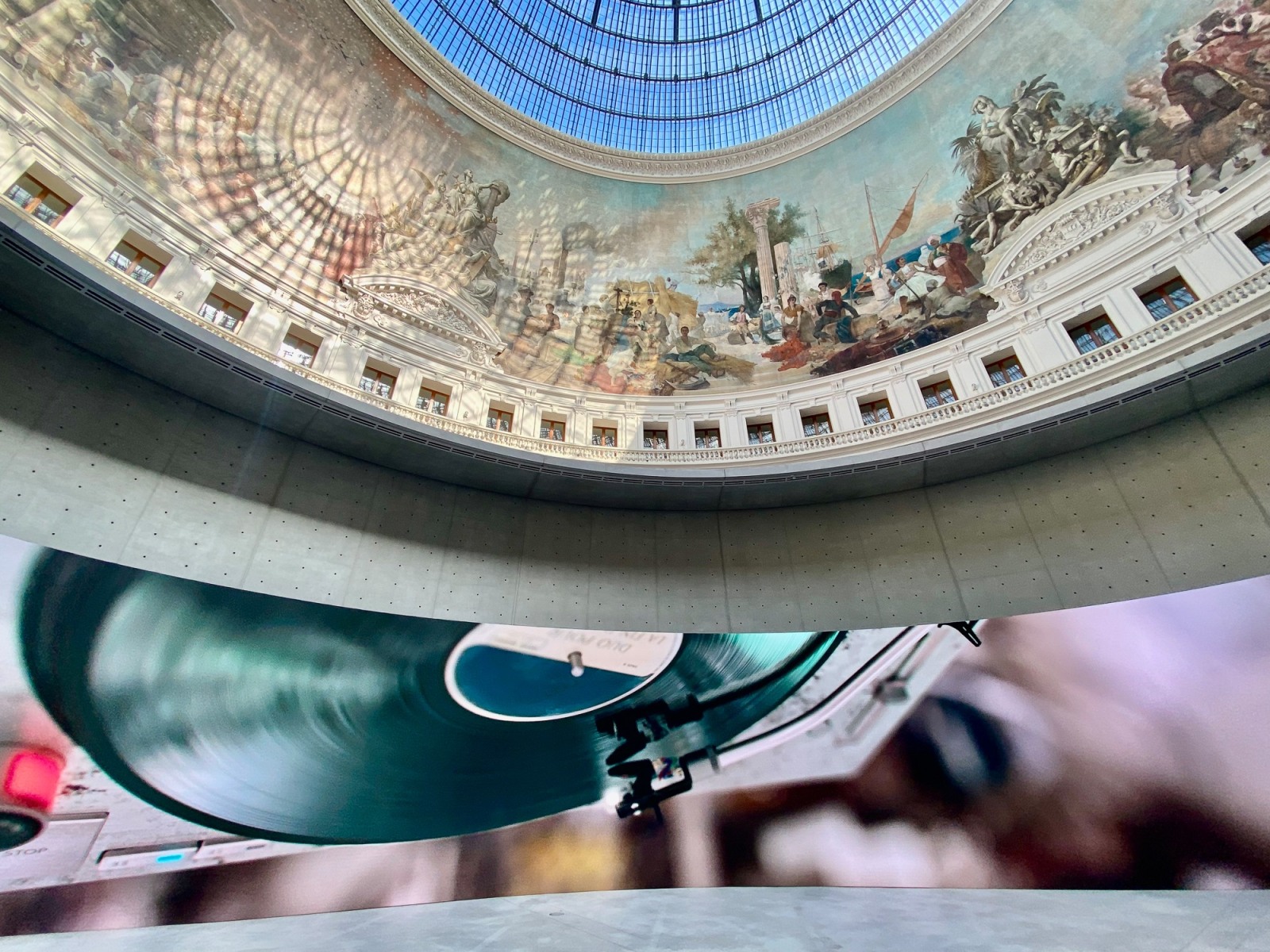
| Anri Sala, Time No Longer, 2021, three-channel UHD computer-generated imagery and three-channel sound, color. Exhibition view: Anri Sala, Time No Longer, Bourse de Commerce – Pinault Collection, 2022.
Photo © Studio Anri Sala | |
|
Anri Sala Time No LongerRotunda of the Bourse de Commerce – Pinault Collection 2 rue de Viarmes 75001 Paris Through January 16, 2023 www.pinaultcollection.comOn view through January 16, 2023, an immersive, cosmic, and nocturnal work by Anri Sala is presented at Bourse de Commerce – Pinault Collection. In the Rotunda of the Bourse de Commerce Time No Longer, 2021, a film on vast, curved screens— marrying perfectly with the Rotunda’s cylindrical forms—is a recent work by the artist and this is its French premiere. Time No Longer draws its inspiration from Olivier Messiaen’s Quartet for the End of Time for part of its dramaturgy. Yet, here Sala orchestrates a new space-time: the soundtrack, arranged for clarinet and saxophone based on the solo The Abyss of the Birds, becomes a music for contemporary times. After its presentation in Houston, Kunsthaus Bregenz, and GAMeC, Bergamo (continuing through October 16, 2022), Time No Longer inscribes the convolutions of its infinite choreography into the circular space of the Rotunda, which seems, in turn, to be freed from earthly gravity, and engaged in perpetual movement. Sala's works, including new works from the Maps / Species series, Take Over, 2017, Another Solo in the Doldrums (Extended Play), 2012, 1395 Days without Red, 2011, Nocturnes, 1999, will be on view throughout the building: in the vitrines in the passageway around the Rotunda; in the Gallery 2 space on the ground floor of the museum, as well as in the basement. The dance of time and its ghosts, its embodiments and erasures are the themes that permeate the hanging entitled Une seconde d’éternité (A Second of Eternity), whose carte blanche to Anri Sala, forms a spectacular epilogue.
|
|
|
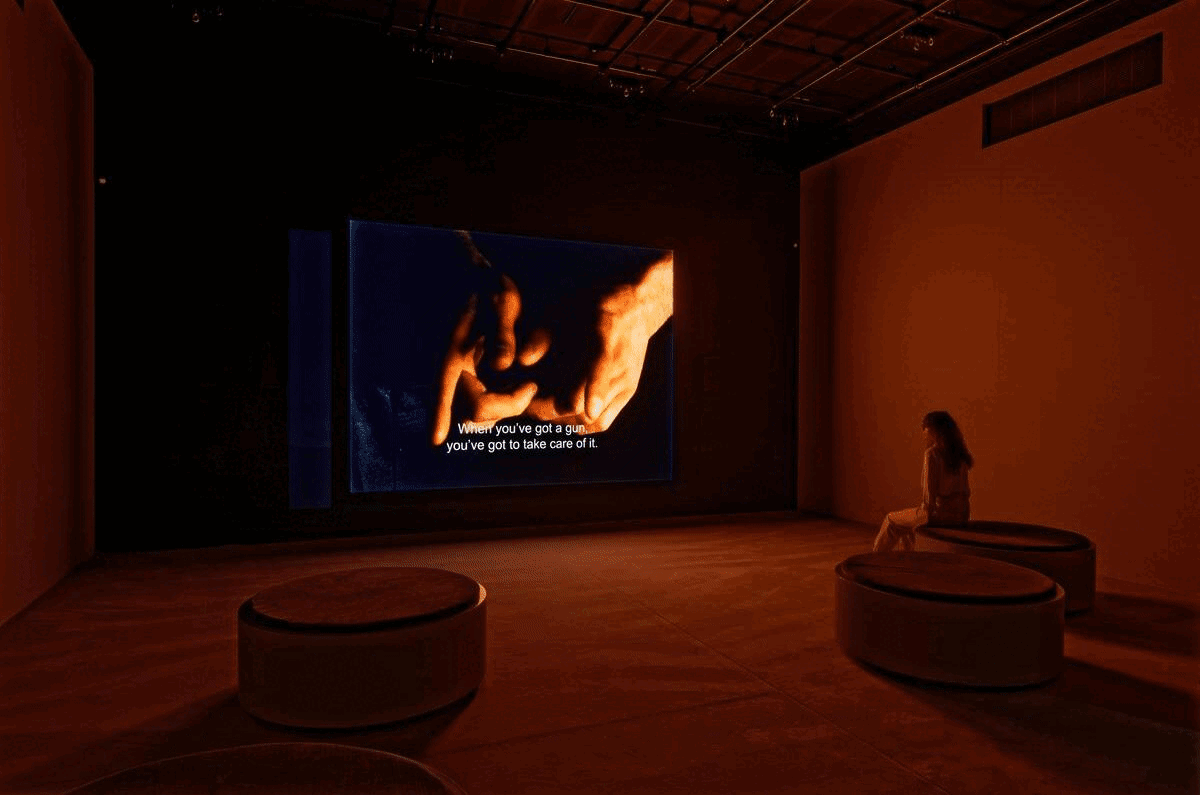
| Exhibition views: Anri Sala, Bourse de Commerce – Pinault Collection, 2022. Photos © Aurélien Mole | |
|
‘[ Time No Longer is] about the story of Ronald McNair, but also the story of the Quartet– the best-known Western piece of music written in captivity,’ explains Sala. Messiaen composed it not for professional musicians, but rather for an ensemble of fellow inmates who happened to be musicians, while he was held in a German prisoner-of-war camp during World War II. Sala rearranged it, with longtime collaborators Olivier Goinard and André Vida, to evoke the loneliness or even calm of captivity, whether in a prison or a spaceship. (McNair, incidentally, had intended to perform a different piece – the narrative pairing is Sala’s). ‘There’s an interval between these two stories; there’s an interval between the clarinet and the saxophone, and this absent humanity in the film. It looks like the turntable is floating forever in space,’ — Anri Sala speaking with Kimberly Bradley for Paris par Art Basel Read here |
|
|
Bourse de Commerce – Pinault Collection |
|
Une seconde d’éternité With Ryan Gander, Dominique Gonzalez-Foerster, Pierre Huyghe, Philippe Parreno, Anri Sala, among others. Bourse de Commerce – Pinault Collection 2 rue de Viarmes 75001 Paris Through January 9, 2023 www.pinaultcollection.comThe exhibition Une seconde d’éternité brings together the works of some twenty artists including Ryan Gander, Dominique Gonzalez-Foerster, Pierre Huyghe, Philippe Parreno, Anri Sala, among others. The account created here through the exhibited works explores the polysemous nature of present time, in turn suspended, fleeting, inhabited by spectral presences, and traversed by the theme of loss and incarnation. This cycle borrows its title from a 1971 work by Belgian artist Marcel Broodthaers, Une seconde d’éternité (d’après une idée de Charles Baudelaire), a film that brings to life for one short moment the presence of the artist through the simple portrayal of his signature.
|
|
|

| Philippe Parreno, Quasi Objects: My Room is a Fish Bowl, AC/DC Snakes, Happy Ending, Il Tempo del Postino, Opalescent acrylic glass podium, Disklavier Piano, 2014.
Various helium inflatable floating balloons in the shape of fish, electrical plugs and adapters, lamp with Arne Jacobsen lampshade, electrical system, electrical wire and plug, magnifying glass, opalescent acrylic glass podium, LED lights, 6 plugs, piano. 194,5 x 600 x 300 cm. Photo © Andrea Rossetti | |
|
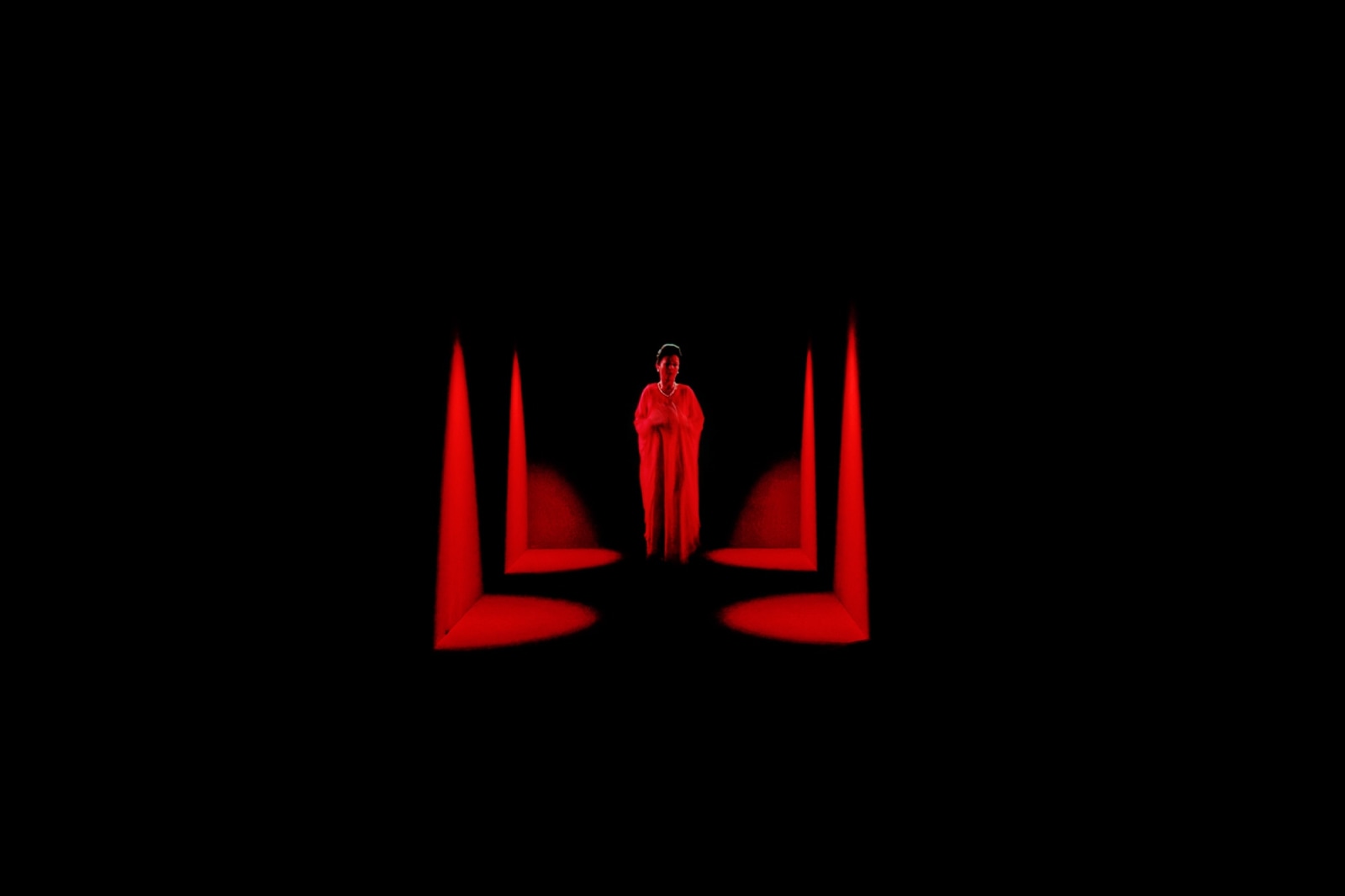
| Dominique Gonzalez-Foerster, OPERA (QM.15), 2016, HD video, projector, screens, media player, amplifier, speakers, lights, curtains, minimum screening surface 1500 width × 750 cm depth, duration: 8 min 05 sec.
© Dominique Gonzalez-Foerster / ADAGP, Paris 2022 / Pinault Collection.
Photo: Aurélien Mole. Courtesy Pinault Collection
| |
|
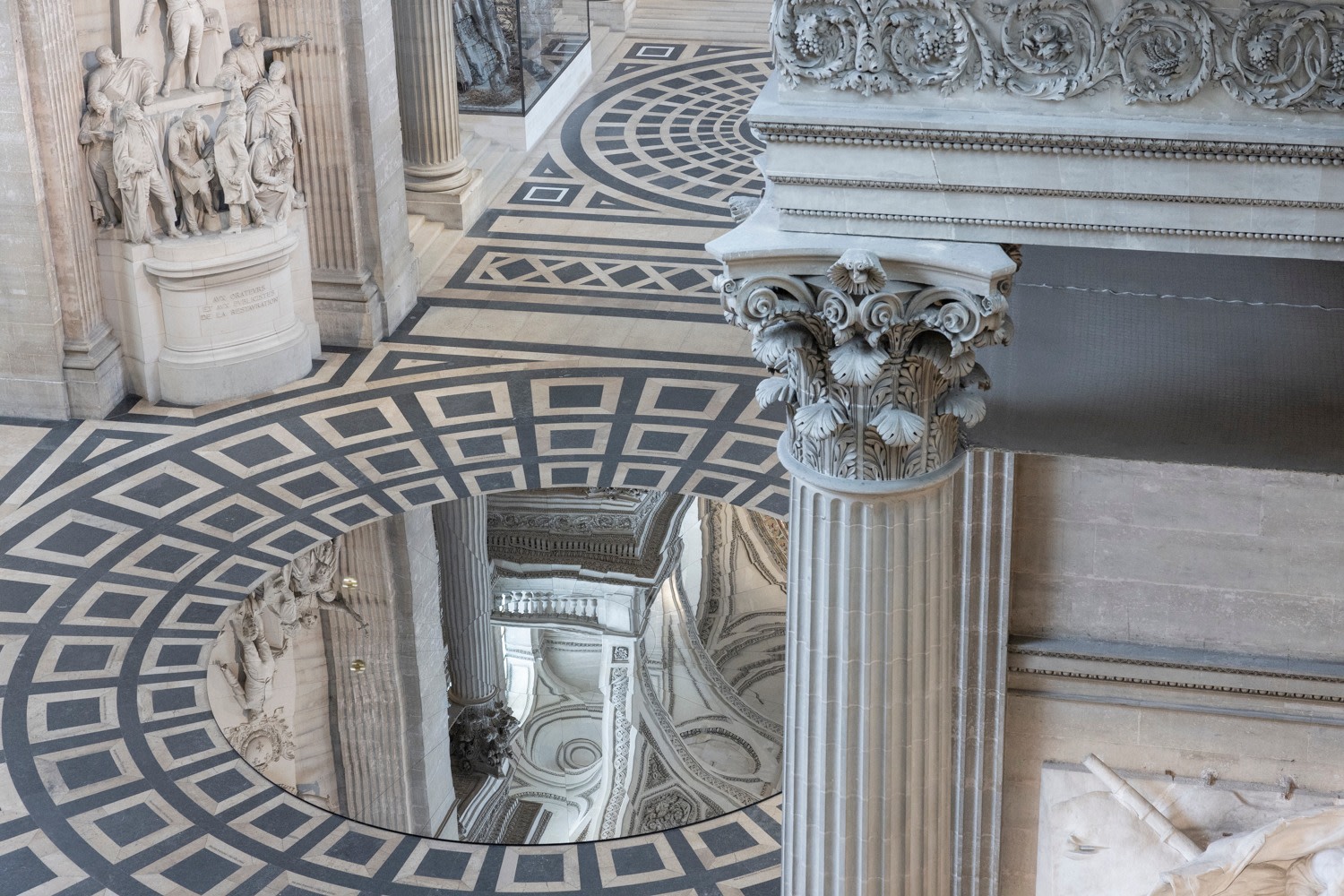
| Ann Veronica Janssens, 23:56:04, 2022, one-way mirror, ⌀ 944 cm, in-situ installation, Panthéon, Paris, 2022. © the artist / VG Bild-Kunst, Bonn, 2022. Photo © Delphine Quême | |
|
Ann Veronica Janssens
23:56:04Panthéon Pl. du Panthéon 75005 Paris Through October 30, 2022 www.paris-pantheon.fr23:56:04, a site-specific work by Ann Veronica Janssens is on view through October 30 at the Panthéon in Paris. Installed underneath the landmark’s dome, the work invites the visitors to rediscover the historical site and its architectural space. For 23:56:04, Ann Veronica Janssens placed a large-scale mirror on the floor beneath the constantly swinging Foucault pendulum – a scientific device demonstrating the Earth’s rotation that was introduced to the building’s interior in 1851. The mirror reflects the moving pendulum as well as the monumental architectural features of the Panthéon, its dome, friezes, balustrades, colonnades, and frescoes. This deep, almost abyssal reflection submerses the visitors into the majestic volume of the building and stages the physical effect of vertigo. With this minimal yet impressive architectural and perceptual intervention, the artist seeks to newly reconfigure visitors’ experience of this great Parisian monument. Janssens’ work foregrounds the body’s perception of the world and itself in it. She often uses light, natural optical phenomena or glass as a medium. Produced with great care, her works exude the impression of great simplicity yet create vivid experiences of the act of seeing, evoking a heightened awareness of the changeability and fleetingness of the individual perception.
|
|
|
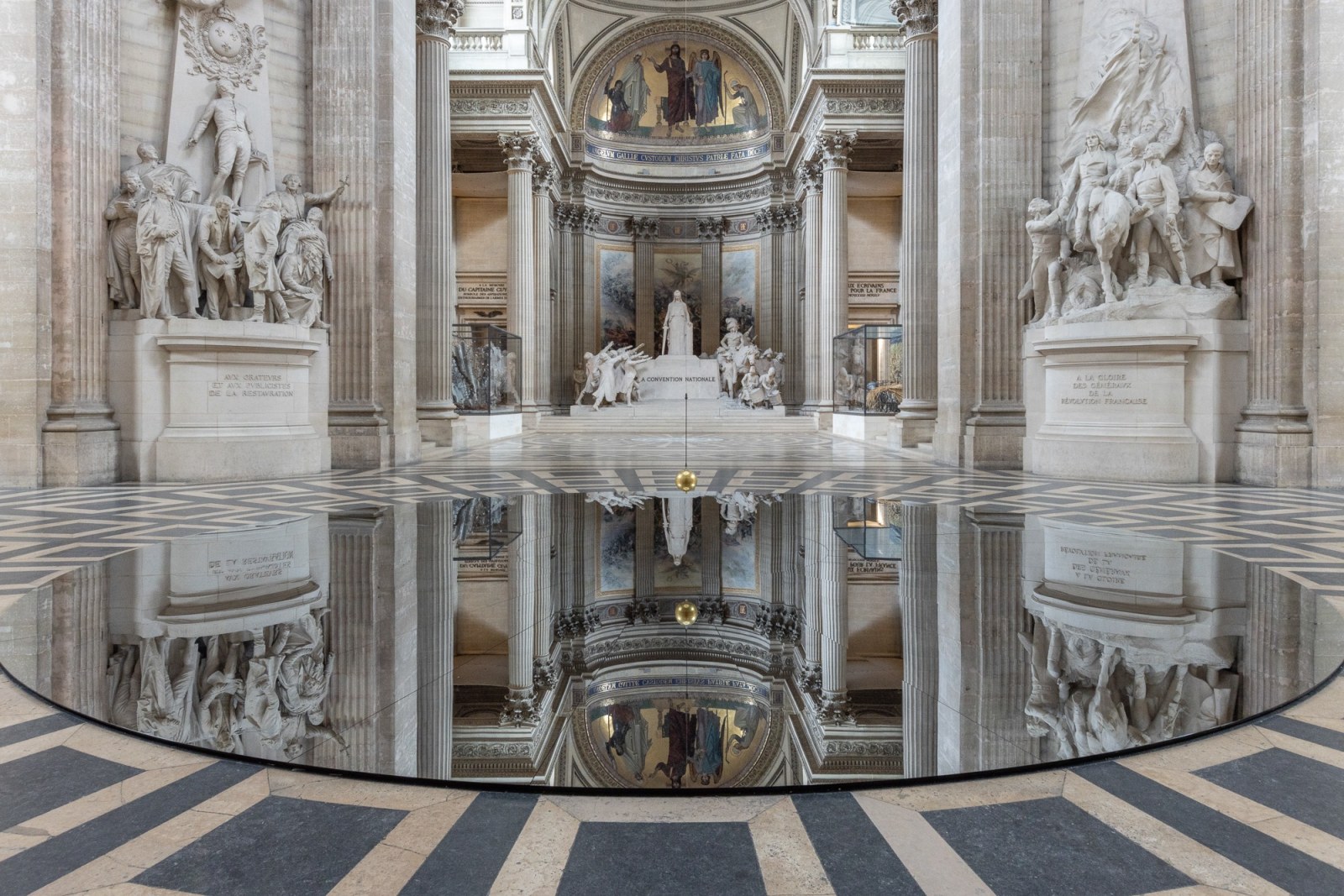
| Ann Veronica Janssens, 23:56:04, 2022, one-way mirror, ⌀ 944 cm, in-situ installation, Panthéon, Paris, 2022. © the artist / VG Bild-Kunst, Bonn, 2022. Photo © Delphine Quême | |
|
The Paris-based publishing house Three Star Books has produced a limited edition artist book with Nathan Carter and Dan Estabrook. Nathan Carter is M A R S and M A R S The Goddess of Sex and Death is Nathan Carter (b. 1970) and Dan Estabrook’s (b. 1969) project. Every Wednesday night, the Brooklyn based artists meet at Carter’s studio where the artist conjures M A R S as she struts into highly staged setups photographed by Estabrook’s keen eye. The volume references private photo albums. Like a medieval illuminated book, each page carrying an original pigment print photograph is lit up with hand sprayed stencils realized at Nathan Carter’s studio by the artists with RUST-OLEUM fluorescent pink bright neon color on blue Fedrigoni Italian paper - making each copy unique. The production has been realized at Three Star Books and the pages are bound with pink anodized aluminum Chicago hardware. Since 2020, when M A R S was born, Carter and Estabrook have created a large body of work from which twelve images have been selected and bound in a custom made volume by Three Star Books. The examination of gender identity has emerged in the work of artists from Pierre Molinier to Cindy Sherman. Continuing in this tradition, artists Nathan Carter and Dan Estabrook invite a coming out, amidst Cecil Beaton’s haunting metallic scenes and The Misfits’ horror punk sounds on the dirty dancehall floor. Playing with lights, lenses, bat-wing eyes and deadly stiletto heels the post-punk* alchemy of Mars is summoned. Special consultant to the artists: Mercedes Jelinek *Note that Nathan Carter is also an accomplished post-punk electric bass guitar player. For more information and to order see HERE
|
|
|
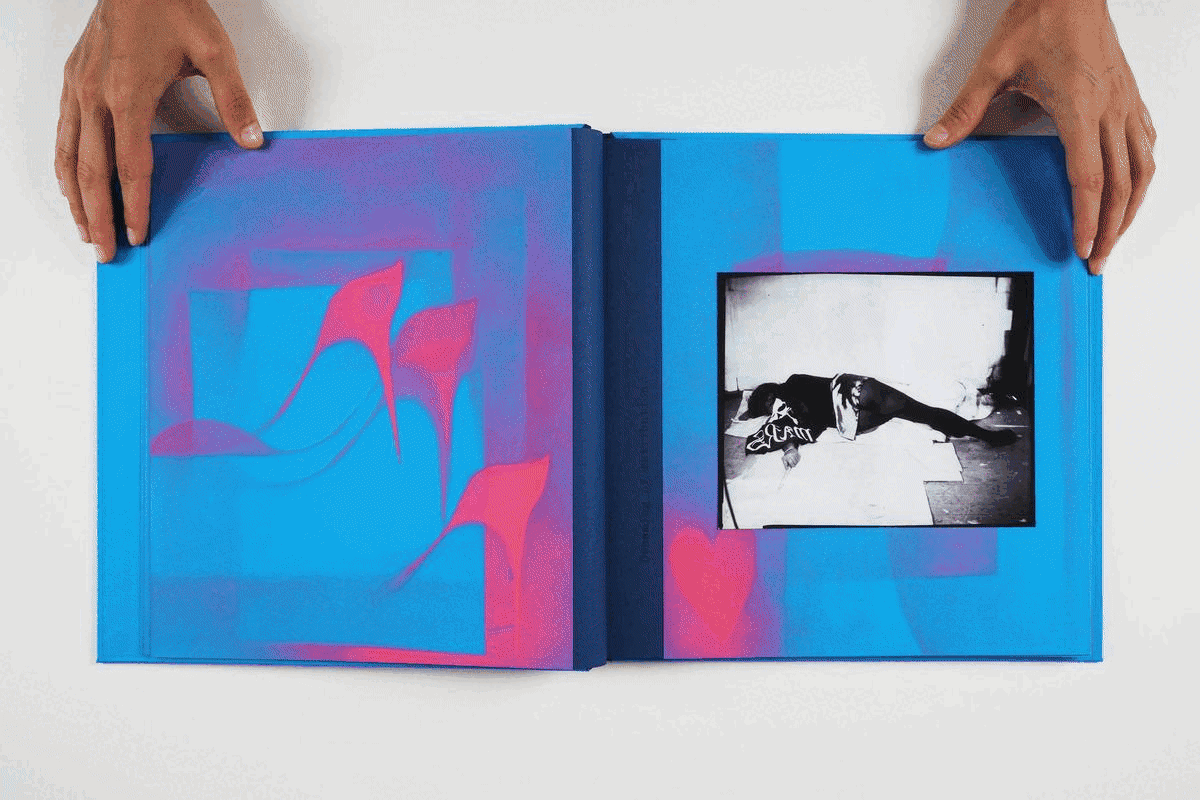
| Photos © Three Star Books | |
|

| Exhibition views: Rosa Barba, Weavers, CCC OD – centre de création contemporaine olivier debré, Tours, 2022. Photos © Aurélien Mole
| |
|
Rosa Barba WeaversCCC OD — centre de création contemporaine olivier debré Jard. François 1er 37000 Tours Through April 30, 2023 www.cccod.fr
Weavers, a new solo presentation by the artist and filmmaker Rosa Barba, unfolds in two spaces of CCC OD — centre de création contemporaine olivier debré. In the nave, Barba has conceived an in situ project, linked to the research she carried out during her recent residency at the Atelier Calder, Saché. In the black gallery she immerses us in a cinematographic space mixing images and sculptures in movement. In the nave, Barba presents a new work, designed for the exhibition space. It is directly linked to the research she carried out during her recent residency in Touraine, where she developed an experimental sound device, using elements such as piano strings and projectors, linked together and producing a sound loop. Another aspect of her research consisted in questioning the plasticity and transparency of film as a medium: Barba has woven 16 and 35 mm films on frames. These films, developed in blue and red, invited the viewer to perceive the space of the studio and the surrounding landscape through these colored films. This technique was inspired by the weaving used in basketry, a craft still present in the Saché region. This new production, initiated in Calder’s emblematic workshop, overlooking the Indre valley, meets a meaningful echo in the monumental and open space of the CCC OD nave. The second part of the exhibition takes place in the black gallery and allows us to discover recent productions by the artist. For this purpose, Barba has reconfigured the exhibition space by emphasizing the permeability between interior and exterior and creating a poetic dialogue between the real landscape and the filmed landscapes. Two kinetic works punctuate the space where four films never before shown in France are also installed, introducing surreal or imaginary landscapes, sometimes themselves protagonists, which the camera depicts or gives a temporal dimension to. Exhibition in partnership with the Atelier Calder in Saché (37), where Rosa Barba was in residence from mid-September to mid-December 2021.
|
|
|

| Work with a projector: Wirepiece, 2022, 16 mm Projector, drum string, bridge saddle piece, pickup microphone and plinth, dimensions variable.
Hanging: Rosa Barba, Weavers, 2022, 35 mm and 16 mm film, 2 steel frames, rotating motor.
Exhibition view: Rosa Barba, Weavers, CCC OD — centre de création contemporaine olivier debré, Tours, 2022. Photo © Aurélien Mole | |
|
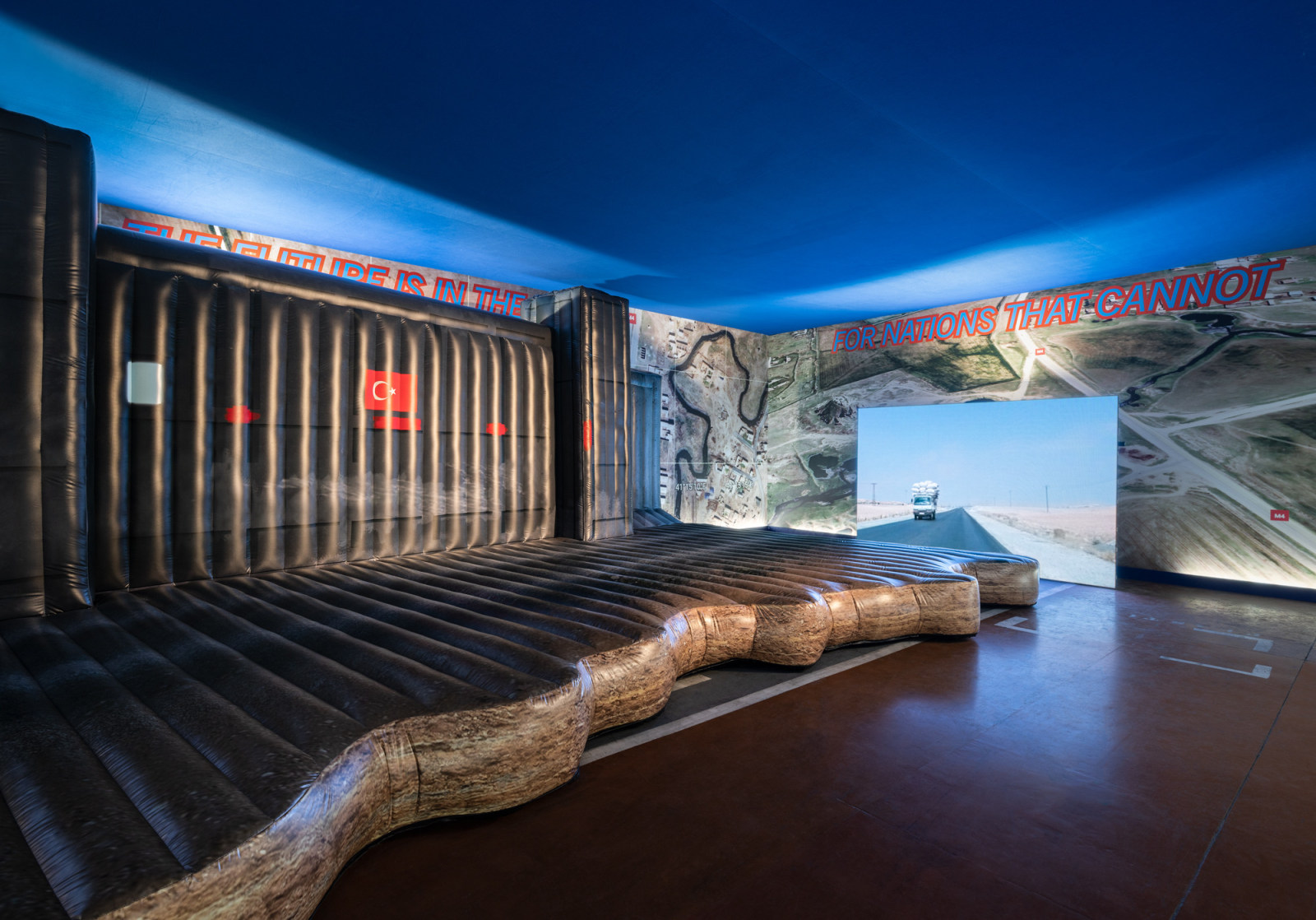
| Cemile Sahin, Drone Valley, 2022 (film still), site-specific installation with inflatable checkpoint sculpture, video, sound and wallpaper, dimensions variable.
Exhibition view: 16th Lyon Biennale: manifesto of fragility, Lyon, 2022. Photo © Andrea Rossetti
| |
|
16th Lyon Biennale: manifesto of fragility With Cemile SahinVarious locations, Lyon Through December 31, 2022 www.labiennaledelyon.com
At the 16th Lyon Biennale, titled manifesto of fragility, Cemile Sahin presents Drone Valley, 2022, a new video installation. Sahin's new multimedia installation focuses on her ongoing work concerning the treaty of Lausanne and its impact on the Middle East one hundred years later. The artist focuses on the third longest wall in the world: the 900km long wall that Turkey built on its border with Syria, supposedly to protect itself against illegal crossing and smuggling. An inflatable sculpture of one part of the wall is shown next to a video of the M4 motorway, a strategic route partly running along the wall, through which Turkey plans to fortify its borders. A century after the Lausanne contracts, a new connection ties the Swiss city, known as "drone valley", to the Middle East: drones and drone software manufactured in Lausanne have been linked to Turkey's patrol system of these vast walls and roads. Connecting aerial, video, sound and sculptural materials from these two massive infrastructure projects, Sahin emphasizes the imposition of ideological realities onto landscapes, as well as the purposeful erasure these ideologies perpetrate. Spanning film, photography, sculpture and literature, Sahin's work reveals how concepts of state power manifest themselves through economic and geopolitical tensions across national borders. Sahin's Drone Valley, 2022 is on view as part of the biennial titled A world of endless promise at Fagor factories, 65 Rue Challemel Lacour, 69007 Lyon. |
|
|
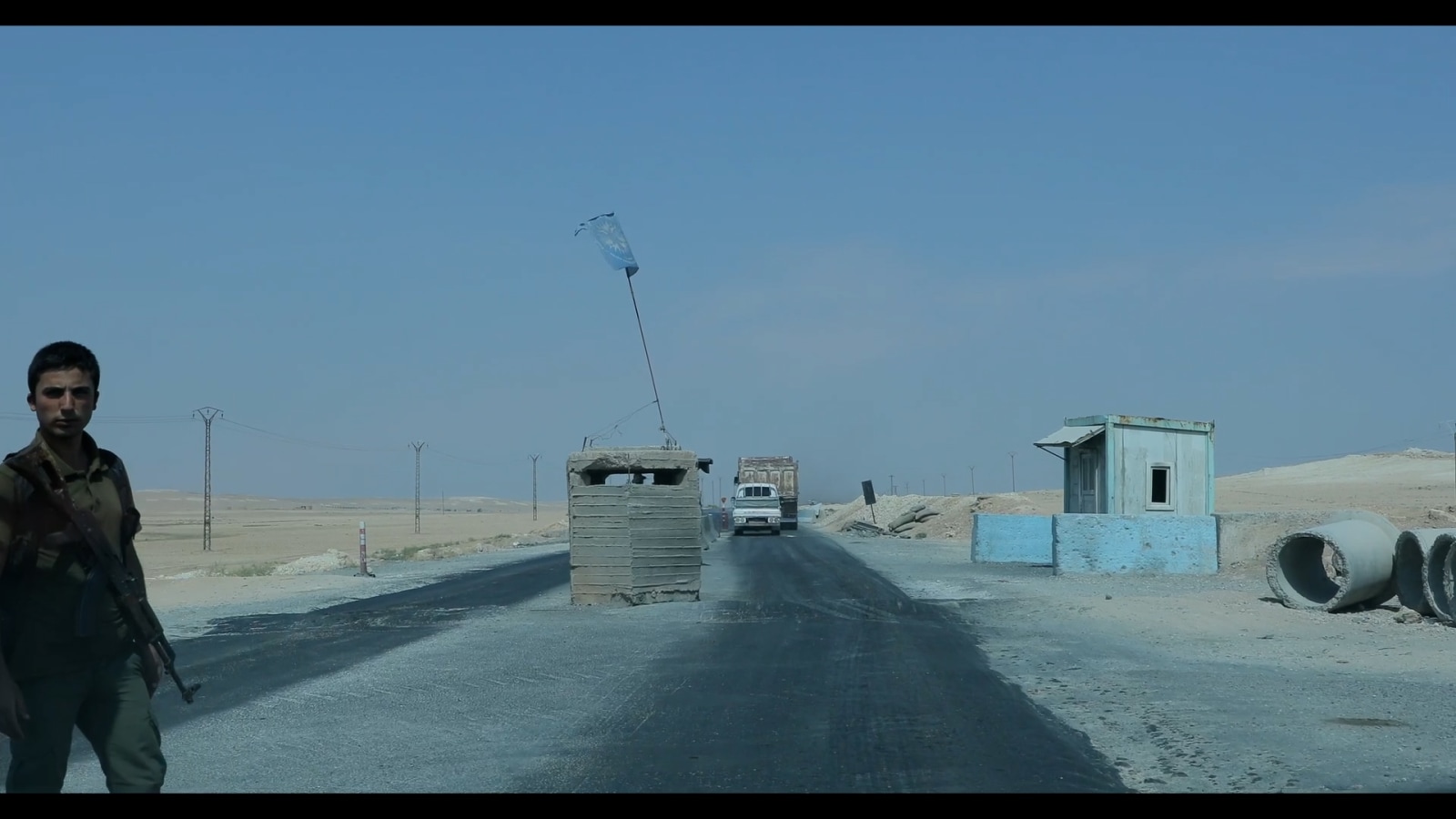
| Still: Cemile Sahin, Drone Valley, 2022. Still © Cemile Sahin | |
|

| Exhibition view: Julia Scher, Maximum Security Society, Kunsthalle Zürich, 2022. Photo © Annik Wetter | |
|
Julia Scher Maximum Security Society
Kunsthalle Zürich Limmatstrasse 270 CH-8005 Zürich Throiugh January 15, 2023 www.kunsthallezurich.ch
Julia Scher has traced the gradual emergence of a ‘maximum security society’ since the 1980s. This is how sociologist Gary T. Marx describes the current era of encompassing surveillance technologies and infrastructures. Borrowing its title from Marx, Scher’s first institutional survey brings together a selection of works from the last 30 years: multimedia installations, video works, sculptures and print and internet projects. Scher draws on this array of media to make explicit how technologies such as video surveillance, image recognition and automated database queries have become entirely mundane and structure our everyday reality. By mimicking familiar surveillance scenarios, Scher’s works evoke guarantees of security and comfort. The central installation, Predictive Engineering, (1993-present), a new production for the presentation at Kunsthalle Zürich, gives the impression that visitors are being checked over for suspicious appearances or behavior. Maximum Security Society also brings together the three beds Mama Bed, Papa Bed and Baby Bed (all 2003) which, equipped with cameras and monitors, make evident how observation and communication (or, today, ‘sharing’) has permeated into the most intimate corners of our lives. In concert with these, the 1988 film Discipline Masters is shown, a four-hour, confessional soliloquy in which the artist attempts ‘to preserve her understanding of [her] life history’. Scher is best known for her numerous surveillance installations that address psycho-social dynamics and perversions which have turned out to be both visionary and prescient. The formal, sculptural quality of her work is often overlooked, however. It is precisely this aspect of Scher's work that the exhibition Maximum Security Society seeks to also highlight, whether in works such as Girl Dog Hybrid (2005), Hidden Camera (Architectural Vagina) (1991-2018) or Surveillance Area (1994). Below read excerpts from Julia Scher's interview with Daniel Baumann, the director of the Kunsthalle Zürich.
|
|
|

| Exhibition view: Julia Scher, Maximum Security Society, Kunsthalle Zürich, 2022. Photo © Annik Wetter | |
|
Daniel Baumann: [Let us] talk about Three Beds at the entrance to the show. You’ve said it’s a shift from public-private into fully private, and the classic Freudian constellation of Mama, Papa, Baby. It’s a psychic landscape that comes into play with that work. It started as a one bed version, then what happened?
Julia Scher: In the idea of surveillance, the powerful component for me is the relationship to danger. How do you see danger? How do perceive danger? I think when Rudolph Frayling talked about ‘to be is to be perceived’ it was about the relationship to surveillance and control devices: who was in control. These ideas of threat, warning and danger that using surveillance allowed me are also a reflection of domestic problematics and my own personal. It fit perfectly: the shape of warning has taken different forms in my work. It’s always there. The first surveillance bed was called Always There. And the music track that went with that was the group Incognito singing Always There, and I do a voice-over with that in Spanish and English. Is the danger perceived or real, and could the equipment save you, or is it just flaccid, just sitting there? It’s just art, not doing anything. Or produces danger, and safety. We can predict the behaviour in a bed: you give birth in a bed, you have sex, you sleep, you die in a bed. You have a dossier in your mind of the activities that are associated with it. And today we’re more alert to what domestic violence happens. So much of this happens a lot of it in a bedroom, on a bed, or next to a bed. A bed is a reserve. A place where you can rest and fill your tank. It is a usually private space. The three beds are about family, connectedness or disconnectedness. The title also refers to the war that Americans started and the idea of journalists being embedded. And the story of the three bears. The baby bed, it’s the future. The future bed is transparent, it’s porous, you can see through it, it is ‘seen’. The baby bed embraces cameras, which are embedded in the transparent blanket. The idea of journalists, people with cameras, it’s all propaganda, in the war field, in a space of war, in a domestic scenario.
|
|
|

| Exhibition view: Julia Scher, Maximum Security Society, Kunsthalle Zürich, 2022. Photo © Annik Wetter
| |
|
DB: Can you say something about the work American Fibroids (1996-2022), installed to the
left in the space?
JS: It’s all pretty much non-functioning surveillance equipment from my older shows. It’s a flea-market, everything has a price tag. But it’s so named like a fibroid in your body. It’s not a cancer, just a blob that gets in the way of other functionality. It takes up useful space, it takes up blood. American Fibroids is like a darkness over the landscape of togetherness and telecommunications and bright spots moving forward. It’s the past, it’s old, it stops functionality, it doesn’t enhance functionality but can be passed off, traded away, removed. It’s like muscle, it’s an accumulation of non-functioning parts which did have a function, in a live installation, but in this case none of the items have a specific duty. In a live install everything has a specific duty, but all the live works, things that hang on the wall, everything has to be like it was. All the live installations, everything is mutable, everything is updateable, goes with the DNA of art, where if something is not working, or you lose the piece, it can be replaced in the future with another part. It doesn’t have to languish in the past construction. That’s for the live works. But these works are displaced, these pieces no longer play a role in the active situation of an old live work. They perform another kind of role, to recycle, so the audio text of the reliquary table is “Recycle or die, recycle or die, you will be recycled or die!” DB: That’s also why it can change, you can always update it.
|
|
|
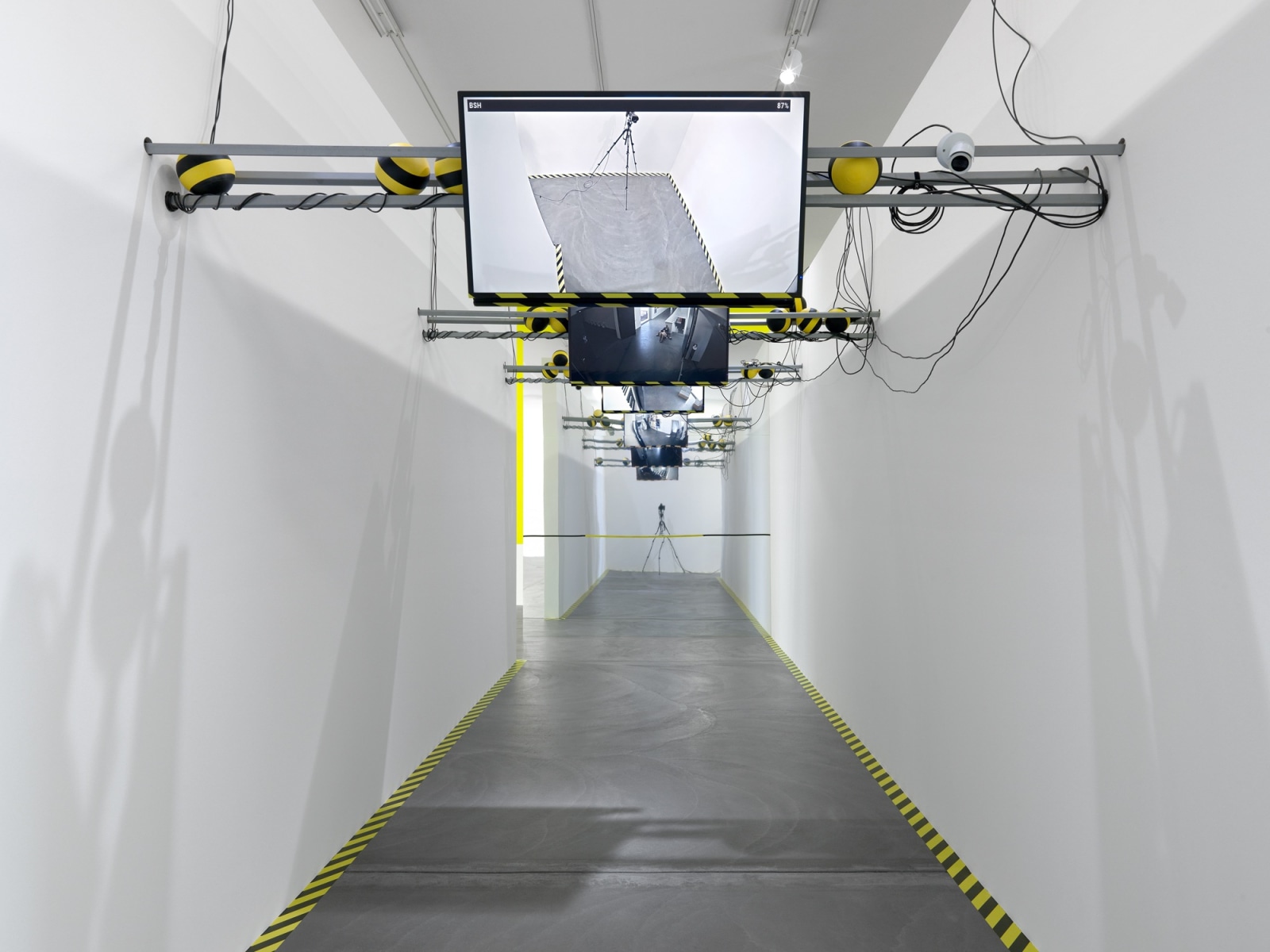
| Exhibition view: Julia Scher, Maximum Security Society, Kunsthalle Zürich, 2022. Photo © Annik Wetter | |
|
DB: Let’s jump to Predictive Engineering, 1993. What was the genesis of the work and how has it been adapted? JS: The term Predictive Engineering is an actual field of study among six recognised by Gary T. Marx as being components of the ‘maximum security society’. I began to read about it in magazines like Dissent in the mid-‘80s. So by 1993 I felt I could imagine his sub-societies of the maximum security society. This piece was an ode to his research about the components of a futuristic society. It’s about the future, predicted. All the categories were about looking ahead. What would be, not looking back at the landscape that was or is. Like Siegfried Zielinski would say, there’s no now, only the past and the future. Now that the language of surveillance is a world language everyone understands. When I was giving talks in the ‘80s people would ask “Well what do you mean by surveillance?” But times have changed. In ’93 the idea was to take two identical hallways of the old SFMOMA war memorial museum leading to a show that was called Thresholds and Enclosures to get people to notice surveillance going on. The idea was to play with humour and with the landscape of the building and to have an introduction to the idea of what is a threshold. When do you come into a surveillance space, and are you stopped? Are you trapped by being recorded? Playing with the body so it was a performative piece that you the visitor, participant subject, would be caught under the surveillance camera’s eye, and be recorded. There were warning signs everywhere. At the same time, there was humour about being seen or being uncovered on camera. This took place by having pre-recorded footage of situations around the museum. Originally the reason for having the fake feeds was that the museum would not let me put cameras everywhere and their insurance company said ‘No, you can’t tap into our system’. In reality it was a reactive construction based on being disallowed from deconstructing some systems, in the time of institutional critique, the wording then thrown about to get you to think differently about space. How to get people to think or see a space differently. So interstitial spaces – at the time – were the spaces that were interstitial through architecture, a camera up on a wall. The idea was to create fake feeds to augment the real cameras they did allow, to make it all present. To bring these non-seen spaces into an artwork. [...] Read the entire interview HERE
|
|
|
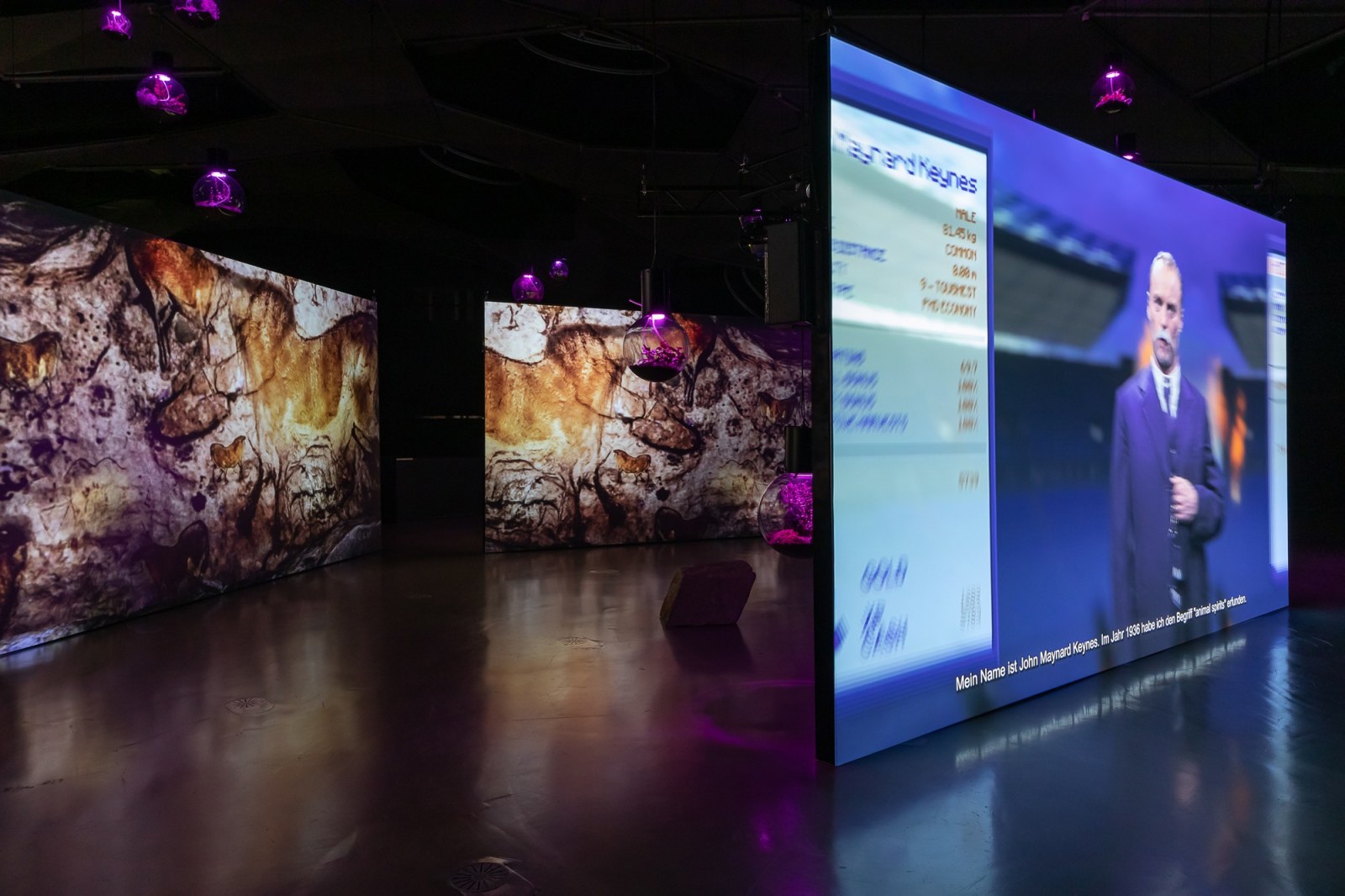
| Exhibition view: Hito Steyerl, Animal Spirits, Kunsthaus Graz, 2022. Photo © Kunsthaus Graz/N. Lackner
| |
|
Hito Steyerl Animal Spirits
Space01, Kunsthaus Graz Lendkai 1 8020 Graz Through January 8, 2023 Visitor information
What is a garden, a habitat, a sphere, a ‘cave’? What spirits live there and how do they show themselves? Directly engaging with the Kunsthaus Graz, the outstanding international artist and essayist documentary filmmaker Hito Steyerl creates a many-layered, intertwined digital and analogue installation in the dark dome of Space01. Hito Steyerl’s immersive installation at Kunsthaus Graz presents the interactive retelling of the work Cave, produced for the MMCA Seoul in 2022. ‘Animal Spirits is a term British economist John Maynard Keynes coined in 1936 to describe the influence of human emotions on markets. Fear and greed interact to create a sphere of irrationality. The pseudo-naturalist idea of the “survival of the fittest” controls human ideas of society and exchange.’ (Steyerl) The starting point of the exhibition is Steyerl’s essayistic film Animal Spirits. It shows Nel, a member of the Spanish collective INLAND, shepherd, YouTuber and cheese maker. From here a multi-layered installation unfolds, its exchange of energy and data mutually pollinating and enlivening and reflecting on the power of the image itself. A black square on the roof of the Eiserne Haus thus refers to Malevich and the end of painting (and victory over the sun) announced in 1915. At the same time, it serves as a solar panel that supplies part of the installation’s energy consumption, including the plants in Space01. These grow under artificial UV light and are equipped with sensors that set in motion the walls around the main film, projected with cave paintings. An arc is thus traced to energy consumption through the global data transfer in (image) communication. For Animal Spirits at Kunsthaus Graz, Hito Steyerl has added to the work, presenting a series of digital installations that can be entered virtually from all over the world.
|
|
|
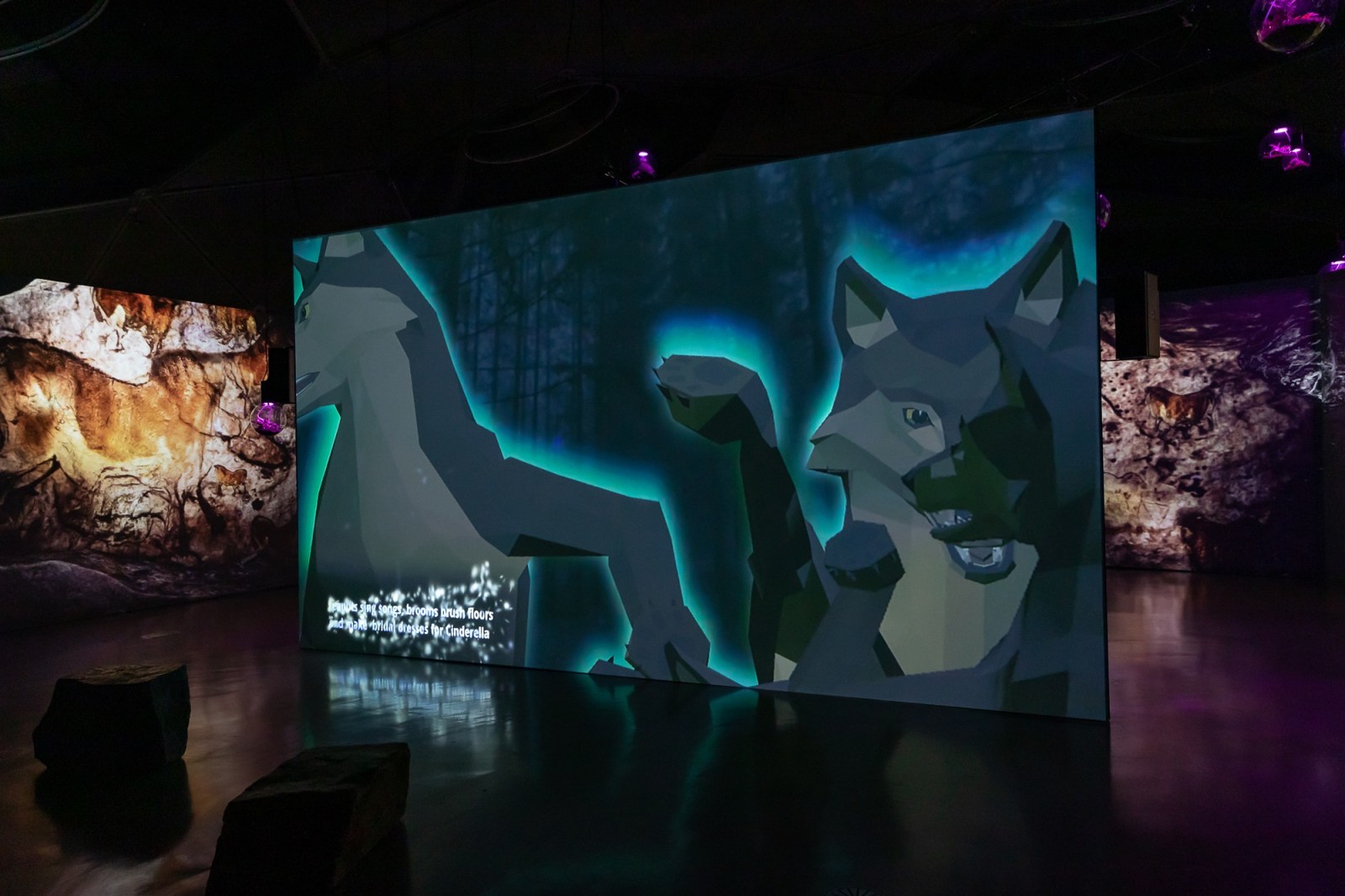
| Exhibition view: Hito Steyerl, Animal Spirits, Kunsthaus Graz, 2022. Photo © Kunsthaus Graz/N. Lackner | |
|
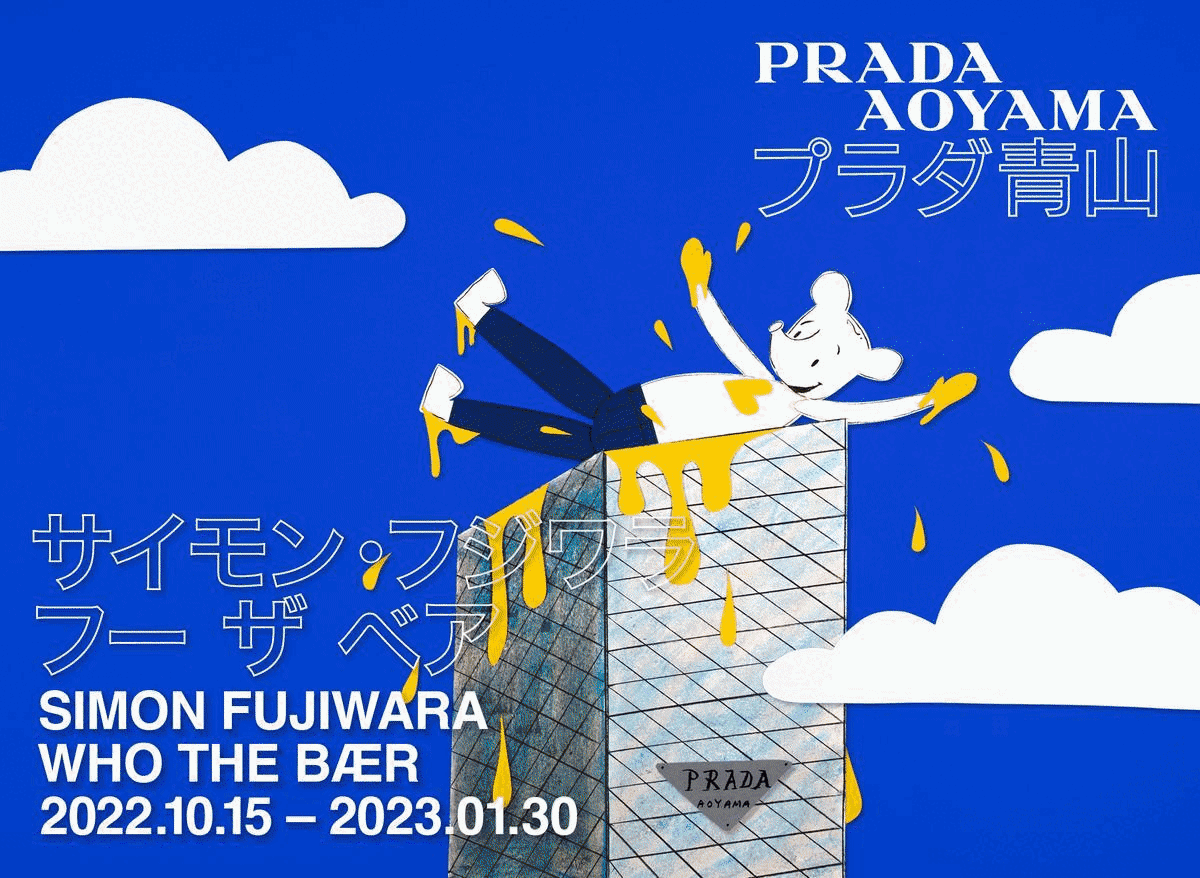
| Exhibition views: Simon Fujiwara, Who the Bær, Prada Aoyama Tokyo, 2022. Photo © Yasushi Ichikawa | |
|
Simon Fujiwara Who the BærPrada Aoyama 5 Chome-2-6 Minamiaoyama Tokyo 107-0062 Through January 30, 2023 www.prada.comWho the Bær is a cartoon character created by the artist Simon Fujiwara that takes inspiration from fairy tales, fantasy literature, animation and theme park worlds. “Who”, as they are known, seems to have not yet developed a strong personality or instincts. They have no fixed identity, no gender, and no sexuality. Who does not even seem to have a clear design but is a being in the making, a self-creation. Who only knows that they are an image, and they seek to define themselves traversing a “Whoniverse” of images. Who the Bær’s world is a flat, online domain of pictures, yet one full of endless possibilities. Through the coming-of-age story of Who, Fujiwara explores a plurality of topics belonging to different realms: from the climate collapse to cultural appropriation, plastic surgery to Pop-art. “Who the Bær” can be interpreted as a distorted mirror of our society obsessed with spectacle, self-representation and the search for a “true self”. A series of new drawings, collages, sculptures, and animations introduces the Japanese audience to Who the Bær’s perennial quest for an authentic self. The exhibition set-up unfolds as a series of pastel-coloured carpeted areas exploring the many facets of Who and marking the stages of their chaotic journey. Through the all-consuming desires of a cartoon bear, we experience the external world as little more than a repertoire of stereotypical images and consumable backdrops for ever new adventures.
|
|
|

| Liam Gillick, A Variability Quantifier (aka The Fogo Island Red Weather Station), Fogo Island, 2022.
Photo © Liam Gillick | |
|
Fogo Island Arts and National Gallery of Canada present Liam Gillick’s A Variability Quantifier (aka The Fogo Island Red Weather Station), 2022. The project is a part of the NGC National Outreach Initiative.
Liam Gillick’s A Variability Quantifier (aka The Fogo Island Red Weather Station) is an artwork intended to function as an operational weather station on the island. It gathers local weather data and is a place for education, reflection, and discussion. The site and work are open for people to visit and use. The work will be displayed on the island through October 2026.
In response to the global climate emergency, Fogo Island Arts invited Liam Gillick to join artists and writers from 28 arts organizations across the world to form the World Weather Network, a ground-breaking constellation of ‘weather stations' located across the world in oceans, deserts, mountains, farmland, rainforests, observatories, lighthouses and cities.
With advice from partners in the local community, Liam Gillick developed his concept for a 2/3 scale model of a typical fishing stage structure, commonly found on Fogo Island. The structure is a framework for scientists and local community members to add meteorological instruments that are helpful in measuring and tracking local weather. Crucially, it helps to monitor changes connected to an increasing experience of the climate crisis. The island has a front row seat on the Labrador Current for observing changes to events such as the annual passage of icebergs in ‘Iceberg Alley’.
Fogo Island Arts (FIA) is a contemporary arts and ideas organization on Fogo Island, located in Newfoundland & Labrador, on traditional Mi’kmaw territory and the ancestral homeland of the Beothuk. |
|
|
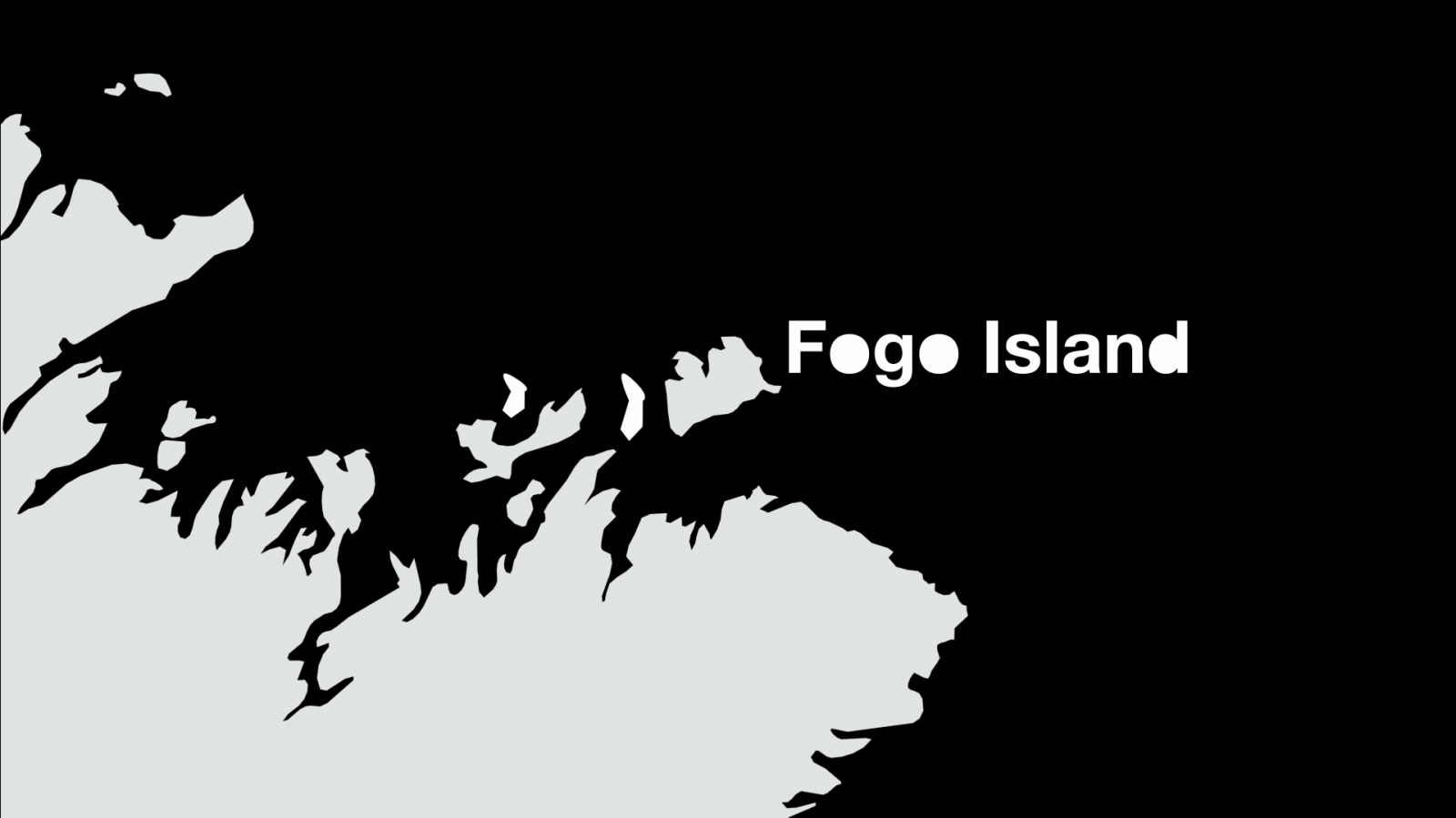
|
Watch here — Liam Gillck's A Variability Quantifier (aka The Fogo Island Red Weather Station) film. | |
|
Étienne Chambaud
Étienne Chambaud
2022
Publisher: Éditions Dilecta
Languages: French, English
Available here
|
|
Anri Sala
Day Still Night Again
2022
Publisher: Walter König
Languages: German, English
Available here
|
|
Bourse de Commerce – Pinault Collection
Une seconde d'éternité
2022
Publisher: Dilecta
Languages: French, English
Available here
|
|
Ugo Rondinone
Phaidon Contemporary Artists
2022
Publisher: Phaidon
Language: English
Available here
|
|
Ugo Rondinone
nude in the landscape
2022
Publisher: Verlag der Buchhandlung Walther und Franz König
Languages: German, English
Available here
|
|
Ann Veronica Janssens
Endless Andness: The Politics Of Abstraction According To Ann Veronica Janssens
2013
Publisher: Bloomsbury Academic
Language: English
Available here
|
|
Ann Veronica Janssens, Michel François
|
|
Rosa Barba
On the Anarchic Organization of Cinematic Spaces - Evoking Spaces Beyond Cinema
2021
Publisher: Hatje Cantz
Language: English
Available here
|
|
Rosa Barba
From Source to Poem
2017
Publisher: Hatje Cantz
Language: English, Italian
Available here
|
|
Cemile Sahin
ALLE HUNDE STERBEN
2020
Publisher: Aufbau Verlag
Language: German
Available here
|
|
Julia Scher
Tell Me When You're Ready
2002
Publisher: PFM Publishers
Language: English
Available here
|
|
Hito Steyerl
Duty Free Art
2015
Publisher: Museo Nacional Centro de Arte Reina Sofía
Languages: English, Spanish
Available here
|
|
Liam Gillick
Half a Complex
2019
Publisher: Hatje Cantz
Language: English
Available here
|
|
Liam Gillick
'A Max De Vos'
2022
Publisher: Borgerhoff & Lamberigts
Language: English
Available here
|
|
|
ESTHER SCHIPPER
POTSDAMER STRASSE 81E
10785 BERLIN
|
|
|
|
|
